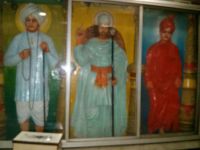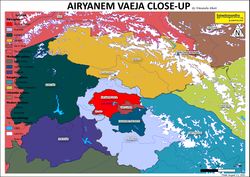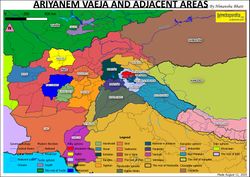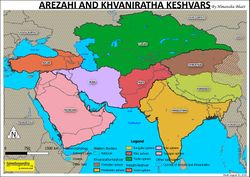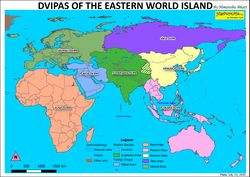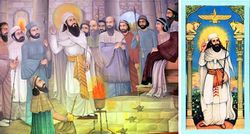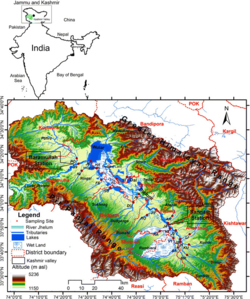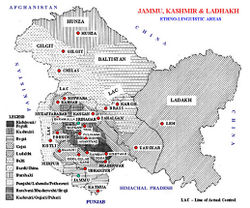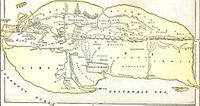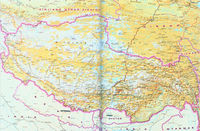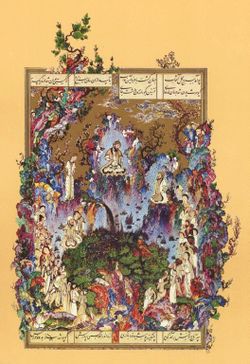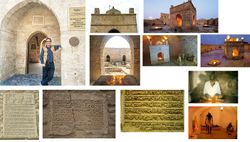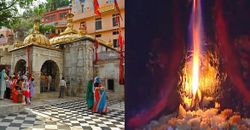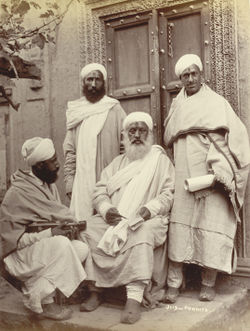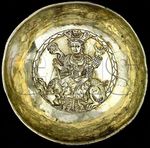Zoroastrianism and Hinduism
Inception of both the Religions[edit]
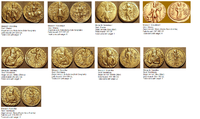
Both Zoroastrianism and Hinduism have similar origins, pay homage to the same spiritual seers, venerate the same gods and even have the same verses throughout the early scriptures. Mazdaen scholars Zubin Mehta and Gulshan Majeed[2] had noted a similarity of Kashmiri customs with Zoroastrian ones. In the modern era, some Mazdaen clerics had visited Kashmir, who include Azar Kaiwan[3] and his dozen disciples[4], and Mobad Zulfiqar Ardastani Sasani[5] who compiled the Dabistan-e Mazahib.
Zarathustra was definitely a Kashmiri Brahman from India as he was an Atharvan[6], who called himself a zaotar[7], manthran[8] and datta.[9] He was referred to as an erishi[10] and ratu[11].[12] He also wore the sacred thread and dressed like a traditional Kashmiri Pandit, compiled Gāthās containing Vedic verses, worshiped Varuna (Ahura Mazda) and venerated other holy Vedic Asuras. He lived as an ascetic in a cave[13] for some time and also had other traits similar to that of an Indian Brahman, not to mention other customs similar to those of Kashmiri Hindus. Further, the fact that Zarathustra personally debated Brahman clerics (i.e., Byas, Changragacha, Gautama) from India at King Vishtaspa’s court in Balkh shows how influential Indian spiritual preachers were then, and it only supports that Zarathustra himself was one. Also, linguistically, not only were some verses he wrote direct excerpts from the Vedas but the closest languages to his own, Avestan, are Sanskrit and Kashmiri. Both, the Vedic geography of Yama's domain and the Mazdaen geography of Yima's domain correspond to an area in central Kashmir. The geographical description of Zarathustra's birthplace in the Mazdaen scriptures match Kashmir's Diti (Daitya) and Indus (Veh) rivers and Urni Jabbar (Jabr) Mountain within Baramulla district. In addition, the descriptions of neighboring regions adjacent to Airyanem Vaeja, such as Ātaro-Pātakān, Kohistan, Kangdez and Panjistan match those of places surrounding Kashmir. Apart from these places in Mazdaen scriptures being in conformity with places in and around Kashmir, the birthplace of Tonpa Shenrab is also adjacent to Zarathustra's. (That makes sense because the religions of the 2 saints are similar in their concepts dualism, cimeration, and customs such as wearing of white turbans for sages.) Ancient scholars, such as Clement of Alexandria and Ammianus Marcellinus, connecting Zarathustra to Brahmans can definitely be seen, and even in modern times Godfrey Higgins had called him "Zerdusht the Brahmin[14]."
It is definitely not hard to imagine Brahmans in an Afghan king's court as there have been throughout history, and even during Zarathustra's time he converted at least 2 other Brahmans of the court, Changragach and Byas. Zarathustra also mentions having dealt with the Angras, and a Gautama.
Similarities[edit]
Zoroastrianism originated in India[edit]
Zarathustra's name[edit]
"Zarathustra became a generic name for 'great prophet' so several Zarathustras arose in the period 6000 to 600 BC the Avesta Y.XIX.18 named a hierarchy of five leaders, the supreme being called Zarathustrotema." - Duncan K. Malloch[15]
Just as the pseudonyms Gautama Buddha, Vardhman Mahavira, and Guru Nanak are reflective of the sages' names and titles, so too is the case of Zarathustra Spitama. 'Zarathustra' is a name that relates his devotion to Ahura Mazda.
| There are the master of the house, the lord of the borough, the lord of the town, the lord of the province, and the Zarathustra (the high-priest) as the fifth. | ||
—Avesta Yasna 19.18.50 [16] | ||
'Zarathustra' as a class of 'ustras' is alluded to in the Atharva Veda.
| Three are the names the ustra bears, Golden is one of them, he said. Glory and power, these are two. He with black tufts of hair shall strike. | ||
The ustras referred to in this passage are definitely humans because elsewhere too Atharvans with black hair (i.e., implying theur youth) are praised. In Mazdaen scriptures too, Athravans with black hair are praised.
| O Zarathushtra! let not that spell be shown to any one,
except by the father to his son, or by the brother to his brother from the same womb, or by the Athravan to his pupil in black hair, devoted to the good law, who, devoted to the good law, holy and brave, stills all the Drujes. |
||
There was "the Armenian Zoroaster, grandson of Zostrianus" ("Zostriani nepos"), who was the Pamphylian friend of Cyrus the Great. There was also a "Zoroaster" of Babylon whom Pythagoras had written of meeting. Further, the Changragach-Nameh and the Zarathusht-Nameh were written by Zarathusht Behrairi Pazdu, while Zaratusht Bahram was an important Mobed. Thus, this explains that the 'Zoroaster' written about after 6th century BCE wasn't always necessarily Zarathustra Spitama, and we can also cancel obscure regions as his supposed birthplace.
Zarathustra's surname 'Spitama' comes from his ancestor Spiti. This name traces its roots to the Spiti Valley of Himachal Pradesh, just south to Kashmir. This is also supported by the fact that Zarathustra had taken solitude at age 15 to Mt. Ushidaran which the Greater Bundahishn identifies as Mt. Kāf.[17] Today is a village in the Spiti Valley of Himachal Pradesh named Kāf.
'Spitama' itself has the Vedic Sanskrit attribute of containing 'tama', like the gotra patronyms of Gautama, Asvattama, Padmottama, Ratnottama, and Girghtama(s), as well as the titles of hiranya-vasi-mat-tama, rathi-tama, ratna-dha-tama, and sasvat-tama.
Background of erishis[edit]
According to the Rig Veda, Vasiśṭha Rṣi was the son of Mitra-Varuna by Urvashi. Vayu Purana[18] and Brahmanda Purana[19] mention that Shukra, Bhrgu, and Angirasa were born from the sacrificial fire of Brahma. The Jaiminiya Brahmana[20] and Satapatha Brahmana[21] mention that Bhrgu and Angirasa were born this way. Aitareya Brahmana [22] mentions this of Bṛhaspati, and Gopatha Brahmana[23] to that of Atharvan.
Athravans were Atharvans from India[edit]
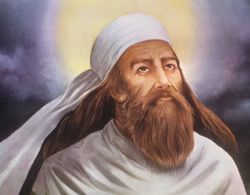
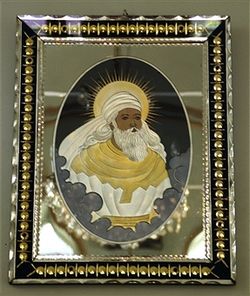
Zarathustra was of the Athravan (Atharvan) priestly caste. The Avesta declares that Zarathustra was an Athravan.
|
Hail to us! for he is born, the Athravan Spitama Zarathustra. Zarathustra will offer us sacrifices with libations and bundles of baresma with libations and bundles of baresma and there will be the good Law of the worshipers of Mazda come and spread through all the seven Karshvares of the earth. |
||
—Avesta 24.94[25] | ||
The Atharvans are as ancient as the Rig Veda. It mentions that Brahmā taught the knowledge of Brahman to his eldest son Atharvan.[26] Further, the Atharvans are associated with fire symbolizing it to be as sacred to them as it was to the later Athravans. Bharadvaja says to Agni that Atharvan has churned Agni out from the lotus, from the head of everything.[27] Vitahavya also says that the Atharvans have brought Agni from the "dark-ones" (i.e., nights.)[28]
Angras are Angirasas[edit]
Further, Zarathustra in his Gāthās alludes to "old revelations"[29], and praises the Saoshyants[30] (fire-priests), and even exhorts his party of attendees to praise the Angras[31]. Hindu scriptures know the Angirasas (descendants of Rṣi Angiras) as the composers of the Atharva Veda, or as the "Atharvangirasa" and the Veda is also known as the Angiras Veda. (Angras are in no way connected to Angra Mainyu, the opposer of Ahura Mazda whose name means Dark Spirit.) Hence, those Angras mentioned by Zarathustra are also Vedic rṣis. He is referred to by some rṣis in the Rig Veda as their "father".[32] Angira is a son of Varuna, as are Bhargava and Vasiśṭha. Angirasas are sacerdotal families with ceremonial practices in the Atharva Veda.[33] Their connection to the sacred fire is such that the Rig Veda also names Agni as Angiras[34], and that the sons of Angiras were born of Agni[35]. In the RV, Angirasas were called "Sons of Heaven, Heroes of the Asura."[36]
The fact that Bhargavas are, like their subgroup Angirasas and the Athravans, also descendants of Vasiśṭha is established in Puranas.[37] Hence, Kava Uṣan (Shukra Acharya the Bhargava) is venerated and included as one of the holiest sages in Mazdayasna because he was also from Vahiśta (Vasiśṭha.)[38]
Sraosha of the Avesta is Bṛhasa (Bṛhaspati) of the Vedas who was the son of Angiras[39], so Sraosha is also of the category of Angras mentioned in the Avesta.
Zarathustra was of Vasiśṭha Gotra[edit]
The Denkard scripture specifically mentions that Zarathustra was a descendant of the law-giving immortals (Amesha Spentas, to which the Vahiśtas belong), as well as of "King Jam"[40] Mazdaen scriptures mention Vahiśta (Vasiśṭha) within the Avesta, wherein he is an Amesha Spenta[41] mentioned as Asha Vahiśta. In Mazdayasna, Asha Vahiśta is a divine lawgiver[42] and guardian of the Asha.[43] Vasiśṭha is a law-giver sage in many instances within the scriptures and is even quoted by other rṣis, such as Bhṛgu and Manu, when they prescribe societal laws.[44] Asha Vahiśta is also closely associated with the sacred fire in several Avestan passages[45][46], just as Vasiśṭha is. Vasiśṭha would have been a popular gotra in Kashmir especially because a major ashram of his was here, Vāngath[47].
The Atharvans are descended from Vasiśṭha Rṣi.[48] Vasiśṭha's dedication to Atharvan is demonstrated in the Rig Veda wherein after being filled with anger, he calms himself by reading the Atharva Mantra.[49] Vedic scholar Mallinatha writes in his commentary of the Kiratarjunya that the Śāstras declare that the mantras of Atharva Rṣi are preserved by Vaśiśṭha.[50] Just as there are several Vaśiśṭhas[51] within the community, the Avesta acknowledges that there are several Vahiśtas,[52] and refers to them as the "Lords of Asha." Even in the Vahistoistri Gāthā,[53] Francois De Blois notices that it consists of verses with a variable number of unstressed syllables.[54]
Avestan as a dialect of Sanskrit[edit]
"Slowly and gradually, it dawned upon them that the language of the Gatha and Zendavesta has very great kinship with the Sanskrta language; when the grammar of Panini, Katyayana, and Patanjali was applied then the Gāthās and Zendavesta came to be understood by the westerners. The lesson from this amazing fact is clear that once the Iranians of the Gatha and Zendavesta and the Indo-Aryans of the Vedas formed one single race, speaking language akin to Samskrta." - Yaqub Masih[55]
It is known that both Vedic Sanskrit and the Zhand Avestan languages were very close. In fact, some scholars have even stated that "the Parsi was derived from the language of the Brahmans"[56] like various Indian dialects. This view point was supported by "Zend language was at least a dialect of the Sanskrit."[57] Max Muller, William Jones[58] and Nathaniel Brassey Halhed[59] put forward this viewpoint.
Erskine Perry also was in the view that Avestan was a dialect of Sanskrit and was exported to ancient Persia from India but was never spoken there and his reasoning for this is that of the seven languages of ancient Persia mentioned in the Farhang-i-Jehangiri, none of them is referring Avestan language. Another scholar perpetuating the viewpoint of Avestan being a Sanskritic/Prakritic dialect was John Leyden.[60]
"Zend is a Brahmin language." - J.G. Cochrane[61]
- List of some Sanskrit and Avestan words
| Word | Sanskrit | Avestan |
|---|---|---|
| gold | hiranya | zaranya |
| army | séna | haena |
| spear | rsti | arsti |
| sovereignty | ksatra | khshathra |
| lord | ásura | ahura |
| sacrifice | yajñá | yasna |
| sacrificing priest | hótar | zaotar |
| worship | stotra | zaothra |
| sacrificing drink | sóma | haoma |
| member of
religious community |
aryamán | airyaman |
| god | deva | deva |
| demon | rákshas | rakhshas[62] |
| cosmic order | rta | arstat/arta |
- List of some Sanskrit and Avestan names for gods
| Sanskrit | Avestan | Status within Mazdayasna | Function |
|---|---|---|---|
| Apām Napāt | Apam Napat | Yazata | Son of water, a god |
| Aramati | Armaiti | Amesha Spenta | Archangel of immortality |
| Baga | Bagha | Yazata | A sun god |
| Ila | Iza | Yazata | Goddess of sacrifice |
| Manu | Manu(shchihr) | Ancestor | Son of Vivanhvant |
| Marut | Marut | Yazata | Cloud god |
| Mitra | Mithra | Yazata | A sun god |
| Nābhānedista | Nabanazdishta | Ancestor | Name of Manu |
| Narasansa | Nairyosangha | Yazata | A fire god |
| Surya | Hvara | Yazata | A sun god |
| Trita | Thrita | Yazata | God of healing |
| Twastra | Thworesta | Yazata | Artificer of the gods |
| Usha | Ushah | Yazata | The Goddess Dawn |
| Varuna | Varuna | Ahura Mazda (one of his 101 names[63]) | The Wise Lord, creator of all |
| Vayu | Vayu | Yazata | A wind god |
| Vivasvant | Vivanhvant | Yazata | A sun god |
| Vritrahan | Verethragna | Yazata | Slayer of Verethra |
| Vasiśṭha | Vahiśta | Amesha Spenta | Archangel and lawgiver to humanity |
| Yama | Yima | King | A pious king of Airyanem Vaeja |
Apart from the gods that are common to both Zoroastrianism and Hinduism, names of some other Hindu gods are carried by even modern day Persian speakers. For example, the names 'Śiva' (Charming) and variations of 'Rāma' (Black)[64] are used by Iranic speakers, such as Persians and Pashtuns. King Ram is also added in names such as 'Shahram' (King Rām) and 'Vahram'/Bahram' (Virtuous Rām), which was the other name of Verethragna mentioned in the Bahram Yasht of the Avesta. The Sassanian kings took the Vahram title, such "Vahram I" (ab. AD 273-276.)[65] Toponyms as well include 'Ram'/'Raman' in their syntax, such as Ramsar in Iran.
- Daēvā does not mean Deva
"The term daeva as synonym with raksasa and distinct from deva survives in Kashmir." - Ashvini Agrawal[66]
Whereas the root of the Avestan word 'daēvā' is "daē" meaning god, of 'deva' it is "div", which means light. Zarathustra wrote in his Gāthās, "daēnāe paouruyae dae ahura!"[67] Hence, the word for religion in Avestan is daēnā.[68]
That deva carries positive connotations is seen in Gāthā 17.4 Yasna 53.4 wherein Ahura Mazda is said to be a "devaav ahuraaha."
As Airyanem Vaeja is in Kashmiri, the Avestan and Kashmiri vocabulary are similar. 'Dai' is still used by Kashmiris to refer as god.[1][2][3]
Many Avestan verses are from Vedas[edit]
The Rig Veda is believed to have been the oldest scripture in the world. In it are verses that are identical to ones within the Zhand Avesta, except the dialect of the Avesta is in Avestan. Ahura Mazda, whom the Mazdaens worship as the Supreme Lord is the Avestan equivalent to Vedic Sanskrit's Asura Medhira or Asura Mada. These terms mean "Wise Lord" and in the Rig Veda this phrase appears in a few places, in one verse being "kṣayannasmabhyamasura".
| With bending down, oblations, sacrifices, O Varuna, we deprecate thine anger:
Wise Asura, thou King of wide dominion, loosen the bonds of sins by us committed.[69] |
||
—Rig Veda 24.14 | ||
There are several passages in the Vedas (especially the Atharva Veda) and Avesta that are identical, with the only difference that they are in the different dialects, Avestan and Vedic Sanskrit.
There are two sets of Mazdaen scriptures; the Zhand Avesta[70] and the Khorda-Avesta.[71] The Zhand contains 3 further sets of writings, known as the Gāthās[72] compiled by Zarathustra, and the Vendidad, and Vispered. (Not surprisingly, Hindu scriptures also have collections known as Gāthas, such as the Vasant Gātha and Theragātha.) The Khorda contains short prayers known as Yashts. They are written in a metre much like the Vedas. Normally they contain 15 syllables known in Sanskrit as Gayatri asuri) like hymns of the Rig Veda, or Ushnih asuri such as in the Gāthā Vohu Khshathrem[73] or of 11 syllables in the Pankti asuri form, such as in the Ustavaiti Gātha.
Some scholars also note that there is a connection between Bhargava Rṣi and Zoroastrianism, as the Atharva Veda portion composed by him is known as Bhargava Upastha and the latter word is the Sanskrit version of the term 'Avesta'.[74]
"The Avesta is nearer the Veda than the Veda to its own epic Sanskrit." - Dr. L. H. Mills
- Some identical verses from Vedas and the Avesta
| Scripture | Sanskrit | Avestan | English |
|---|---|---|---|
| Rig Veda (10.87.21) / Zhand Avesta (Gāthā 17.4 Yasna 53.4) |
mahaantaa mitraa varunaa samraajaa devaav asuraaha sakhe
sakhaayaam ajaro jarimne agne martyaan amartyas tvam nah |
mahaantaa mitraa varunaa devaav ahuraaha sakhe ya fedroi vidaat
patyaye caa vaastrevyo at caa khatratave ashaauno ashavavyo |
O Ahura Mazda, you appear as the father, the ruler, the friend, the worker and as knowledge.
It is your immense mercy that has given a mortal the fortune to stay at your feet. |
| Atharva Veda 7.66 / Zhand Avesta (Prishni, Chapter 8, Gāthā 12) |
yadi antareekshe yadi vaate aasa yadi vriksheshu yadi bolapashu
yad ashravan pashava ud-yamaanam tad braahmanam punar asmaan upaitu |
yadi antareekshe yadi vaate aasa yadi vriksheshu yadi bolapashu
yad ashravan pashava ud-yamaanam tad braahmanam punar asmaan upaitu |
O Lord! Whether you be in the sky or in the wind, in the forest or in the waves.
No matter where you are, come to us once. All living beings restlessly await the sound of your footsteps. |
| Rig Veda / Zhand Avesta (Gāthā 17.4, Yasna 29) |
majadaah sakritva smarishthah | madaatta sakhaare marharinto | Only that supreme being is worthy of worship. |
| Atharva Veda / Zhand Avesta (Yasna 31.8) | vishva duraksho jinavati | vispa drakshu janaiti | All (every) evil spirit is slain. |
| Atharva Veda / Zhand Avesta | vishva duraksho nashyati | vispa drakshu naashaiti | All (every) evil spirit goes away. |
| Atharva Veda / Zhand Avesta | yadaa shrinoti etaam vaacaam | yathaa hanoti aisham vaacam | When he hears these words. |
Why Zarathustra's teachings are called Zhand Avesta[edit]
The Avesta is also known as the Zhand Avesta. Zhand is the Avestan equivalent of 'Chhand'.
| O Kshatriya, the verses that were recited by Atharvan to a conclave of great sages, in days of old, are known by the name of Chhandas. They are not be regarded as acquainted with the Chhandas who have only read through the Vedas, without having attained to the knowledge of Him who is known through the Vedas. The Chhandas, O best of men, become the means of obtaining Brahm (Moksha) independently and without the necessity of anything foreign. | ||
—Mahabharata Udyoga Parva Chapter 43:4[75] | ||
The word 'Avesta' comes from Sanskrit 'Abhyasta', which means Repeated. Hence, the Avesta (Abhyasta) is basically a repetition of Zarathustra's teachings.
Zarathustra was born in Kashmir[edit]
The birthplace of Zarathustra has been a subject of dispute ever since the Greek, Latin and later the Muslim writers came to know of him and his teachings. Cephalion, Eusebius, and Justin believed it was either in Balkh (Greek: Bactria) or the eastern Iranian Plateau, while Pliny and Origen thought Media or the western Iranian Plateau, and Muslim authors like Shahrastani and al-Tuabari believed it was western Iran. [76] While Zarathustra's place of birth has been postulated in various places even in modern times, including within areas not historically included by authors, such as in Tajikistan and Uzbekistan, a few scholars have believed that he was born in Kashmir. Shrikant G. Talageri[77] and T. Lloyd Stanley[78] were proponents of this Kashmiri Airyanem Vaeja viewpoint. Mazdaen scriptures[79] mention repeatedly that Zarathustra was born in Airyanem Vaeja, also known as Airyanam Dakhyunam. However, Zarathustra moved from there to Balkh, where he was given sanctuary by its king and he had become a royal sage. The Mazdaen scriptures further say that many other people of Airyanem Vaeja had moved out with the dramatic climate change whereby snow and cold weather became much more frequent. Zarathustra was regarded as a pious Godman for the Balkhan administrators of his time and India was recognized as a center of spiritual and scientific wisdom. This is why Mazdaean scriptures show that King Vishtaspa's court was already familiar with the Indian Brahman adviser Changragach who was teacher to minister Jamaspa, even before Zarathustra's arrival to Balkh. The Brahman Byas was also welcome in King Vishtaspa's court and met and had become a disciple of Zarathustra. King Vishtaspa (Greek: Hystaspes) was the father of King Darius I of the Balkh Kingdom and he had studied astronomy amongst the Brahmans of India.[80]
There are similarities noticed by scholars such as Subhash Kak and Zubin Mehta which are described by them between Mazdaen practices of Kashmiri Hindus. These include the sacred thread for women (called aetapan in Kashmiri) and the sacred shirt (sadr.) The festival of Nuvruz[81] in commemoration of King Yima is known as Navreh in Kashmir which is celebrated by Kashmiri Hindus. Furthermore, the folklore of Kashmir too has many tales where devas[82] are antagonists to both devas and asuras. As the title Zarathustra has many variations, such as 'Zartust' and 'Zardost', the Sanskrit equivalent of his title is 'Haritustra Svitma'. The 'p' in 'Spitama' corresponds to a 'v' in Sanskrit just as Avestan 'Pourusarpa' is 'Purusarva' is Sanskrit. Whereas the consonant 's' of many Sanskrit words becomes 'h' in Avestan, 'Svitama' maintains its letter because it is followed by a 'v', just as how the 's' in Sanskrit 'asva' (horse) becomes 'aspa' (i.e., 'Dhruwaspa' means She who possesses strong horses, and animals within names were more common, such as Yuvanasva and Vindhyasva.) As 'Spitama' means white, the Sanskrit word for the color-based name is 'Svitama'. Svita is a metaphorical characteristic associated with purity and normally associated with Brahmans in the Vedas. For example, the Rig Veda[83] describes the Vasiśṭha ṛṣis as 'svityam' (white), 'svityanco' (dressed in white)[84] and white-robed. Zarathustra dresses in white as well Mazdaen priests also dress up in white. The connection between Vasiśṭha ṛṣi with Atharvan Rṣi is a very close one.
Identification of Avestan sacred places in Kashmir[edit]
- See also: King Yama's Kingdom was in Kashmir, Rig Vedic rivers, India is the homeland of Indo-Europeans
Kashmir itself has taken on various endonyms and exonymns, which can make pinpointing whether an author is talking about the region. In this case, the Mazdaen scriptures refer to it as Airyanem Vaeja and Anu-Varshte. In addition to these, the region has been called Kashmar, Kashir, Kashrat, Kasherumana, Khache-yul, Kasperia, and Kipin, Vitastika, and it together with Balawaristan is known as Hari-varṣa, Naishadha-varṣa, Uttara-Patha, and Deva-Kuru. It has symbolic and historic association with rṣis, and has been known as Rishivaer/Rishi-wara (Land of Rṣis.) Even Persian literature has mentioned the words Reshi, Reshout, and Rea-Shivat when speaking about Kashmir.[85] Firdaus (Paradise) is another Persian word that has been used to describe Kashmir. The word Airyanem within the phrase Airyanem Vaeja means Of the Aryans. Jain mantras use the term in the salutations, such as "Namo Airiyanam" in the Namokar Mantra, and "Om Hreem Namo Airiyanam" as an astrological mantra for Jupiter.
- Why Airyanem Vaeja is also called Anu-Varshte
The Avesta mentions 'Anu-varshte daēnāyai'[86], meaning "religion of Anu-land." This prayer requests the help of Aredvi Sura to help Zarathustra able to convince King Vishtaspa to accept the 'religion of Anu-Varshte.' The Anu tribe, also known as Anavas in many Hindu scriptures, were based in Kashmir. There's even a village called Ainu Brai after them within Pahalgam tehsil of Anantanag in Kashmir. That they later annexed nearby lands, including Balkh in Afghanistan, is evident from scriptures such as that of Panani's that tells us of Anava settlements.
In the Anava lineage, 7th in descent from Anu were brothers Usinara and Titikshu. The territories gained by the Anavas was split by these brothers wherein Usinara had grasped Kashmir and the Punjab[87] while Titikshu gained rulership over eastern territories of Anga (Bihar), Vanga (Bengal), Suhma, Pundra, and Kalinga (Orissa.)
Because Kashmir has prehistorically been the Anava stronghold, even during the Dasarajna War as the Rig Veda mentions, it is acknowledged as such both in Hindu scriptures (i.e., Atharva Veda[88]) and in the Mazdaen Avesta.
One of the reasons why historically Balkh and some other regions of modern Afghanistan were Indianized (and hence, referred to as Ariana) is because the Anavas also held areas of Afghanistan under their suzerainty. In Vrtlikara[89], Sage Panini (from Afghanistan himself) mentions that there are 2 Anava settlements of the Usinara called Ahvajala and Saudarsana. Even scholarly Chinese visitors to ancient India, Fa Hien and Yuan Chwang describe the story of a certain King Usinara told at Udyana (modern Swat Valley where people are mostly ethnically Afghans) that sacrificed his life to save that of a dove's.
To little surprise the Kurma Purana[90] mentions Anava being 1 of the 7 sons (Saprtarṣis) of Vasiśṭha, meaning that Vasiśṭha had married within the royal family. Within the same Manavatara era another son of Vasiśṭha was Shukra or Kavi Uṣana (Kava Uṣan of Mazdaen scriptures), meaning that Vasiśṭha had likely married multiple women.
- Jabr Mountain is Urni Jabbar Mountain
Zarathustra was said to have been born in the village of Raji[91] by the Dareja[92] River near the Jabr Mountain[93]. In Vendidad 1.16 where the city of Ragha is referred to the Pahlevi commentators add that it is in Ātaro-Pātakān. In Kashmir, there is a village of similar name, Renji in Sopore district[94]. There are other villages and towns bearing 'Rai' in their names. These are Raipura, Raika Gura, Raika Labanah, Raika Mahuva, Rainawari, and Rai'than. Kashmir bears the villages Raj Pora Thandakasi[95] Dareja is also mentioned to be where Zarathustra's father lived[96], hence, Zarathustra lived there too. Today in Kashmir there are the 2 rivers Darga Burzil and Darga Rattu that merge to form the larger Astore River.[97]
- Amui (Amar) is Amartnath in Kashmir
| The sorcerer (Zandak), who is full of death, founded a city of Amui (Amar), and Zardusht, descendant of Spitama, was of that place. | ||
—Satroiha-i Airan 59 | ||
This verse is saying that Zarathustra was of this place, meaning he likely spent a significant portion of his life there. This is also the opinion Carl Bezold and Louis Herbert Gray.
Amarnath pilgrimage is Anantanag district, bordering Baramulla district, where Zarathustra was born.
- Rai is Raihan Bag in Kashmir
| Zarathustra was of that place (Rai.) | ||
—Vendidad[98] | ||
This village is very close to the Urni Jabbar mountain, it is in Khag tehsil in the Badgam district.
- Daitya River is the Jhelum
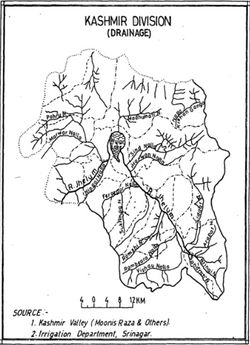
Scriptures mention the original homeland of the religion and of Zarathustra, but due to placename changes, the exact location has been hard to pinpoint. Daityas are also mentioned (as are Danavas) in ancient Mazdaen texts as good beings. It is believed that the homeland of the Aryans is located by the Daitya River[100] as said in this Avesta quote, "Airyanem Vaejo vanghuydo daityayo", which Darmesteter translates as "the Airyana Vaejo, by the good (vanghuhi) river Daitya."[101] In later scriptures, the river is known as 'Veh Daiti' wherein the Veh refers to the Daiti being its tributary. Veh in the Bundahishn is mentioned as the Indus River. Bundahishn mentions that Veh is also called Mehra by Indians, and surely enough Mehra is a town along the Indus. Veyhind (Udabhānḍapur, modern Hund) is also a town reflecting Indus' Veh-name. Further, Vahika was the name of a kingdom around the Indus and its meaning is Land of the River.[102] (Here was Arattadesa or Panchanada.) Kashmir has a river named Diti which is said to have been an incarnation of Diti, mother of the Daityas.[103] The connection between the Diti River of Mazdaen scriptures and the patriarch Diti of Hindu scriptures has been observed by James Hewitt.[104] Daityas have been mentioned in Hindu Epics as staunch Asuras. This river is also popularly called as Chandravati, Arapath or Harshapatha.[105] The Arapath Valley begins where the Arapath (Diti) stream stems out of Jhelum.[106] Because the Diti becomes the Jhelum at their stem, the Mazdaen scriptures just call the entire Jhelum as Daitya River. They also refer to it as the Veh Daiti because the Jhelum itself merges into the Indus, which the Bundahishn calls 'Veh'. (The entire Jhelum is certainly known by many names in India.[107].) Just as the Bundahishn calls the Daitya "the chief of all streams"[108], scholars note the Jhelum has more streams than any other Indus tributary. Even the Nilamata Purana declares that Varuna "knows the man who merely bathes in the Vitasta."[109]
Zarathustra used to bathe in the Dareja affluent of the Daitya. In the same way, Hindus are encouraged to bathe in it among rivers of Kashmir.
| After that on the 14th of the dark-half of the month, one should take bath, before sun-rise, in the cool water of the Vitasta or the Visoka or the Candravati (modern Diti) or the Harsapatha or the Trikoti or the Sindhu or the holy Kanakavahini or any other holy river or the water-reservoirs and the lakes. | ||
King Vishtaspa used to perform sacrifices along the Dareja. In the same way, Hindus are encouraged to perform execute the Rajasuya ceremony along the Diti.
| By bathing in Harsapatha, one is honoured in the world of Sakra and by bathing in Candravati (modern Diti) one gets the merit of (giving) ten cows.
Holy is the river Harsapatha and so also is Candravati (modern Diti). The wise say that there accrues (the merit of the performance of) Rajasuya at the confluence of these two. |
||
- Dareja is an affluent of Daitya River
The Dareja is the lower Jhelum from which stretches from Hairbal Ki Galli to Muzaffarabad to join the other part of the Jhelum that stretches Mangla Reservoir to Muzaffarabad. Today this stream is known as the Lower Jhelum.
| For the occurrence of the seventh questioning, which is Amurdad's, the spirits of plants have come out with Zaratust to a conference on the river Dareja's high ground on the bank of the waters of the Daiti. | ||
—Zadsparam 22.5.12[110] | ||
| Of those eighteen principal rivers, distinct from the Arag river (Amu Darya) and Vêh river (Indus), and the other rivers which flow out from them, I will mention the more famous: the Arag river, the Vêh river, the Diglat river (Yarkhun) they call also again the Vêh river, the Frât river, the Dâîtîk river (Jhelum), the Dargâm river, the Zôndak river, the Harôî river, the Marv river, the Hêtûmand river (Helmand), the Akhôshir river, the Nâvadâ river, the Zîsmand river, the Khvegand river, the Balkh river (Balkhab), the Mehrvâ river they call the Hendvâ river (Indus), the Spêd river, the Rad river which they call also the Koir, the Khvaraê river which they call also the Mesrgân, the Harhaz river, the Teremet river, the Khvanaîdis river, the Dâraga (Jhelum's stream Lower Jhelum) river, the Kâsîk river, the Sêd ('shining') river Pêdâ-meyan or Katru-meyan river of Mokarstân. | ||
- Bundahishn's Kohistan is Kohistan of Karakoram Range
| The Daitik river (Datya) rises in Airan-vej and flows through Kohistan. | ||
—Bundahishn 20.13 | ||
Kohistan is also referred in the Pazhand transcription of the Bundahishn as Gurjistan.[112] The Gurjistan that is referred to is the Gurez Valley in Kashmir. Gurez is acknowledged by V. R. Raghavan as to have come from 'Gurj' and 'Gurjur'.[113]
Gopat, also known as Gopistan is another name for Kohistan.
| The land of Gopat has a common border with Eran Vez on the banks of the river Datya. | ||
—Bundahishn 11.A.7[114] | ||
Subdastan is also a toponym of Kohistan.
| The river Datya comes from Eran Vez and goes to Subdastan. | ||
—Bundahishn | ||
- Bundahishn's Panjistan is Panjistan of Punjab
Panjistan is mentioned as possessing the Zend River. The name in present-day is used to refer to a region of northeastern Punjab region. Even the language spoken there is called Panjistani.
The Pahlavi word 'Zend' (referring to a city, not the Zhand Avesta) is the translation of local 'Jand' within the Punjab. There are cities and towns throughout the region named Jand. Hence, the river is called Jand (Zend.)
| The Zend River passes through the mountains of Panjistan, and flows away to the Haro River. | ||
—Bundahishn 20.15 | ||
- Hara Mountains are Himalayas and the river Aravand is Sarasvati
Aravand, being Sarasvati, originates in Uttarakhand. Mountains across the northwestern Himalayas contain 'Hara' within their names, such as Haramukh Mountain[115] and Haramosh Mountain nearby in Gilgitstan. Hara is the shortened form of the mountain range's name Hara-Berezaiti.
Hara's most sacred peaks are known as Us-Hindava (Pahlevi: Usindam) and the Hukairya (Pahlevi: Hugar.) In the Avesta, Us-Hindava Mountain (which means Upper Indian Mountain) is also spoken of as Usindam and Usinda Mountain and it receives water from a "golden channel" from Mt. Hukairya (Of good deeds[116].)
Further, the Aredvi Sura River that the Avesta writes about, is the Sarasvati River of the Rig Veda is said to flow from Hara into the Vourukasha Sea[117] (Indian Ocean.) Sarasvati flowed from Hardikun Glacier (West Harhwal Bandarpanch Masif) and took its coarse into the Indian Ocean. To further, that Avestan Aravand was in Uttarakhand is that it mentions god Sraoesa (Avestan name of Bṛhaspati) living in the Hukairya mountains. There is a praśasti dedicated to Sarasvati inscribed in Madhya Pradesh, which states that Sarasvati lived in heaven together with Bṛhaspati.[118]
Also, the Avesta speaks of the Aravand River, which is another name for Aredvi Sura, and it is the Avestan translated name of Amaravati River, Sarasvati's other name.
- Mount Kāf is Mount Meru
Mt. Kāf is the same mountain that Zarathustra is believed in legends to have gone into recluse. In Mazdaen sources it is usually called Ushidarena. In Hindu sources a Kashmiri mountain called Ushiraka (also referred to as 'Darva' and 'Abhisara') is mentioned as a place where people are sent for solitude. It is also mentioned in Buddhist texts as Ushiraddhaja and Ushira-giri, and as Ushinara-giri in the Kathasaritsagara.
Al-Biruni mentioned that this is the same mountain that Indians call Lokaloka.[119]
The modern K2 mountain is Mt. Meru. It is in the boundary between the Karakoram and the Himalayas. The Karakoram (Black Mountains) are also known as Krishnagiri (Black Mountains) in Sanskrit. As a lot of places around Kashmir and Balawaristan contain 'giri' or 'gir' within their names.
Scholars like Charles Hamilton Smith and Samuel Kneeland had identified that the Kāf mountain or mountains are just north of the Indus River.[120] The K2 is just north of Indus River.
- Mount Cinvat is Mount Cṛṅgvāt
A mountain mentioned in Mazdaen scriptures is Cinvat. In Hindu texts there is a mountain associated with Meru because the latter's waters flow through the Cṛṅgvāt (also known as Tri-Cṛṅga.)
The meaning of the Sanskrit word 'Cṛṅgvāt' is summit peak, and 'Cṛṅgi' is used in general for the placenames of peaks of the Himalayas[121] and of Sringaverapura (modern Allahabad), Srisringa, Chirtasringa, and Hiranyasringa.
- Outer versus Inner Kashmir
The Bundahishn divides Kashmir into 3; inner, central, and outer. Inner it calls "Kashmir-e andaron." Other scholars, such as Al-Idrisi, Dimashqi, Ibn Khaldun[122], and Shariyar b. Burzurg, have noted this distinction as well when writing of the region. Geographer Al-Mas'udi wrote that Inner Kashmir was founded by Kai Kaus. Historically in India, Kashmir has been written of as 3; Kamraz (Kramarajya or Kamraj), Yamraz (Yamrajya or Yamraj), and Maraz (Madvarajya or Maraj.)
| Included in the latter are other regions, such as Kangdez, the country of Saokavastan, the desert of the Arabs, the desert of Peshanse, the river of Navtagh, Eran-vej, the var made by Yima and Inner Kashmir. | ||
—Bundahishn | ||
This passage distinguishes Airyanem Vaeja (Eran-vej) from Yima's var and Inner Kashmir. That then leaves the question: If this Bundahishn verse covers all lands from the Arabian Peninsula to Inner Kashmir, then where is 'Outer Kashmir'? Historically the Kashmir Valley had been divided into 3 regions; Kamraj (ruled by Kamran), Yamraj (ruled by Yama or Yima), and Maraj (ruled by Maran.) Because the passage mentions Eran-vej, the Yama's var, and Inner Kashmir in that consecutive order it aligns with the sequence of Outer Kashmir or Kamraj, Central Kashmir or Yima's vat, and Maraj or Inner Kashmir. Further, Kamraj includes Baramulla district which contains the Veh, Daitya, and Dareja rivers as well as Mt. Jabr. Hence, the Bundahishn's author of the excerpt purposely mentioned these regions in that order.
Kashmir lies on a plateau surrounded by high inaccessible mountains. The south and east of the country belong to the Hindus (Indians), the west to various kings, the Bolar-Shah and the Shugnan-Shah, and the more remote parts up to the frontiers of Badakhshan to the Wakhan-Shah. The north and a part of the east belong to the Turks of the Khota and Tibet. - Al-Biruni[123]
- More identifiers of Kashmir
"If India were the original home of Indo-Europeans, it must also be the birth place of Zarathushtra. If the Zoroastrians had migrated out of India, they would have carried memories of the geography they left behind. Avestan literature is not familiar with the Indus. In fact, it believes Indus and Oxus to be the same. In contrast, Avesta itself refers to the features in Afghanistan." - Rajesh Kochhar[124]
Rajesh Kochhar's statement that Zarathustra would have had to have been born in India for it to have been the Indo-European homeland holds true, because the Avesta indeed mentions toponyms of features in northern India, mainly from Kashmir. The reason why most places in the Avesta are of Afghanistan is because Zarathustra, who was not from the Balkh Kingdom and had migrated there as most scholars agree, had only composed the Gāthās of the Avesta, whereas the rest of it was composed by his converts in Balkh. It is believed that the time gap between the Gāthās and the rest of the Avesta are centuries.[125] Scholars believe that this can be seen from "the poor grammatical condition of the language" of the Vendidad portion of the Avesta.[126] Kochhar also says Mazdaens who migrated would have to carry the memories of India with them, because the first Mazdaens were Zarathustra's family including his cousin Maidhyomaongha, also known as Maidhyoimah or Medhyomah, brother-in-laws Frashaoshtra and Jamaspa,[127] wife Hvovi, his daughters named Freni, Thriti and Pourushista, and his three sons which migrated with him, Zarathustra was the only compiler of the Avesta out of them. Apart from Zarathustra and his family, the first community of adherents was founded by King Vishtaspa[128] Interestingly enough, the king converts[129] after recognizing Zarathustra's holyness, when the prophet healed his paralyzed horse[130] just like the Sant Kabir and Sant Namdev [131] brought back a cow to life to earn the faith of kings. So because Kochhar asserts that India must be the Indo-European homeland by meeting his criteria, then India is Airyanem Vaeja.
India in general is overlooked by modern scholars who study the Mazdaen scriptures. Of importance is Mithra, who is associated with the Indian Subcontinent. His dominion is geographically described in the Mihir-Yasht as extending from eastern India and the Hapta Hindava to western India and from the Steppes of the north to the Indian Ocean. The Avesta mentions Four Waters, which are four rivers of paradise. Kashmiri poets have written of "four rivers of paradise" in their works. The Four Waters of paradise according to the Avesta are:[132]
- The Azi
- The Agenayo
- The Dregudaya
- The Mataras
The water of these has a trait that they contain honey or honey-sweet water: "Two crossing canals that joined in a pond and which symbolized the four rivers of Paradise where milk, honey, wine and water flow."[133] This same bed of four rivers is the one referred to in the Rig Veda. The Veda mentions waters filled with honey-sweet water as the greatest work of nature: "The noblest, the most wonderful work of this magnificent one (Indra) is that of having filled the bed of the four rivers with water as sweet as honey."[134] The river of Kashmir which has four streams is the Jhelum and its four branches are Arapath (the Diti River), Vishau, Rimiyara and Lidar.[135] As Airyanem Vaeja is said to have been the birthplace of the first set of humans, the Kashmiris too state the human origin story about Kashmir.
"Aryana Vaeja has been placed in Media by inhabitants of Persia and Media. But this is only a transfer...which has nothing primitive and has only originated in consequence of the real site being forgotten."[136]
Zoroastrianism's scholars have written about the origins of the Mazdaens from India. Max Muller had said that, "The Zoroastrians were a colony from northern India."[137] M. Michel Break wrote, "The Zoroastrians were a colony from Northern India."[138]
Also identified in the Mazdaen scriptures are people such as Yima (Yama) and Manushchihr (Manu),[139] who have traditionally been strongly associated with Kashmir. Manushchihr in the Avestan Yasht[140] is mentioned as "the holy Manushchihr, the son of Airyu."
| Zardasht is said to have planted, under auspicious circumstances, two cypress-tress, one in Kashmir and the other in Farumad-tus, and the Majusi (Magi) believe that he brought the cypress from paradise when he planted it in those places. | ||
—Farhang-i-Jehangiri | ||
Both the Farhang-i-Jehangiri and the Shahnameh mention that Zarathustra had planted a cypress tree at a place named Kashmar. This place in the prior text is named also as Kashmir. The composers of the Rehbar-i-Din-i-Zarthoshti (Dastur Erachjee Sorabjee Meherji Rana) and Dabistan (Mohsan Fani), believed this to be the Kashmir in India. Though the Kashmar/Kashmir in the story is actually a town in Khorasan, one can see that the etymological derivation of 'Kashmar' is from the more ancient region of Indian Kashmir. It's quite possible that the seeds to grow the tree came from Kashmir. Certainly, cypress tress exist in Kashmir, and the local species is known as Cupressus cashmeriana.
- Zarathustra learning from and preaching to other Vedic scholars
Ancient Greek scholars, such as Clement of Alexandria and Ammianus Marcellinus[141], had written that Zoroaster had studied with the Brahmans of India. We know from Mazdaen literature that in his youth, Zarathustra's preceptor's name is Burzin Kuru(s), and the Kurus were a dynasty that had then dominated in parts of North India and in Afghanistan. Kashmir of course, is historically known as a part of Deva-Kuru. Further, even today there is the Burzahom Neolithic site next to Baramulla district in Kashmir, and the Draga Burzil stream in Kashmir, only further showing that the name Burzin has a connection to Kashmir. Ammianus had written that the Magi derived some of their most secret doctrines from the "Indian Brachmans" (i.e., Brahmans.)[142] Arabian writers have given a lot of information concerning the learning which Zoroaster acquired from the Indian Brahmans.[143] Ammianus also states in his 23rd Book of History that Prince Gushtasp (King Vishtasta's brother) went deep into the secluded areas of northern India and having reached a forest for retreat of the most exalted Brahmans, he learned spiritual knowledge from the Brahmans there and then returned back to his domain to preach this newly acquired wisdom to the Magi.[144] Par Thomas Maurice believed and wrote that Zarathustra had studied with Brahmans in India.[145] Kashmiri Brahmans are known synonymously as Kashmiri Pandits or simply as 'Pandits' (Scholars) and Anquetil du Perron believes that the Mazdaen scripture the Dhup Nihang mentions Mazdaen Pandits. The 8th century CE scripture refers to three Dasturs called 'Pandits' whose names were Bio Pandit, Djsul Pandit and Schobul Pandit.[146] Their names appear in the prayers of that scripture.[147] Interestingly enough, the word 'Dastur' is used in Kashmiri to mean custom.[148] Furthermore, Ibn al-Athir too and written that Zarathustra had been in India at one point.[149]
According to the Canda's Persian text, the Changragach Nameh, an Indian Brahman was called to King Gushtasp's palace to discuss with Zarathustra the Mazdaen religion. The Brahman after his discussion had became a preacher of the religion and went back to India where he established followers and temples.[150] Changragacha's name bares similarity to a placename, 'Chandrabhāga'. Another known Brahman that was a disciple of Zarathustra was a sage from India named Byas (in the lineage of Vyas)[151], and likely Nāidyāongha Gautama (a sage in the lineage of Nodhasa Gautama.) According to the Bhaviṣya Purāṇa, the Magi had first settled on the Chandrabhāga.[152] This account also coincides with Timur's finding "fire-worshipers" in Punjab. Further, Aristoboulos, when visiting Taxila,[153] had stated that the dead were "thrown out to be devoured by vultures."[154] This practice is still observed in parts of western Tibet.[155] Even Buddhist scriptures mention the great charnal fields near Simhapura in Kashmir wherein corpses were fed to wild animals for disposal.[156] Further, within Taxila had existed a great Jandial fire temple mentioned by Philostratus.[157] In the 1079 CE century, Sultan Ibrahim the Ghaznavid had attacked a community of Mazdaens at Dehra (probably Dehra Dun.) Then from Timur's invasion of India, among his captives of both Mazdaens and Hindus from Tughlikpur, some were Mazdaens who offered fierce resistance. In 1504 CE, Bedauni mentioned that Sultan Sikander destroyed fire-altars.[158]
- Relationship between the Magi and Indian Hindu Priests
The Magi being Athravans were accepted as Brahmans and they settled in Punjab first when they were brought by Samba (son of Kṛṣṇa) and they spread from there to other parts of the Indian Subcontinent including Karnataka and Nepal which are also known as the Magacharya or Maga Brahman today.
- Where nations speak Avestan-like languages today
As Zarathustra had spoken Avestan, the language likely would have been spoken in a place where it was popular. Today, Kashmiri[159][160][161] (Koshuri) is closest language to Sanskrit and hence to Avestan that is spoken by a linguistic group very similar to Rig Vedic Sanskrit. In addition, languages very close to Sanskrit which are also spoken in regions adjacent to Kashmir, showing only that the Sanskritic-Avestan homeland would at least include Kashmir. The neighboring nations which speak Sanskrit-like languages are the Kalashi, Shina, Gawar Bati, Dameli, Pashayi, Kohistani, Palula and Nuristani. Just as in Avestan, 'zarat' means golden and 'ustra' refers not only to camel[162] but also to wild animals such as cows and sheep in general[163], as well as buffalos. 'Ustra' is used a few times in the Atharva Veda), displaying the point that camels and buffalos were very familiar and common amongst where the Veda's compilers and where Zarathustra lived.
- Why Zarathustra left for Balkh
"That this Magian language was Zend is surely no forced hypothesis, since from those Brahmins seated in Bactria, we long after find Zoroaster bringing the same religious system and employing their Zend terms for it: a fact which no one can deny." - John George Cochrane[164]
In ancient time, Indian Brahmans had a great amount of influence over the kingdoms adjacent to India or ones that extended from India to other places like Gandhara, Kakeya, and Kamboja. The fact that Athravans are the chief priests of Mazdaean in Afghanistan implies that Brahmans were already established in the region before Zarathustra's arrival there. In the Vedic Era, King Atyarāti Jānaṃtapi conquered Uttara-Kuru, thus bringing more Indian influence to Central Asia and it shows the level of influence that India had. In the 3rd century BCE it was Asoka who had it under his dominion, and in the 8th century CE, it was Kashmiri king Lalitaditya Muktapida that had suzerainty over it. Balkh was known to have a Brahmans within the court of its king as well. Historically in India, Brahmans and other spiritual teachers have sought royal patronage to institutionally aid their religions such as in preaching beliefs to society and building temples. They would become rajyagurus (royal teachers) or rajpurohits (royal sacerdotal priests.) Zarathustra had become the chief spiritual adviser of the Balkhan court and his family members who were the first Mazdaens and also had similar positions within the court. Ancient Greek historian Aelianus in De natura animalium,[165] also mention that there were "Indian Arianians" and there is some suggestion that control of Ariana fluctuated between Indian and Arian Arianians. This infers that Indians in Ariana had political influences.
"A Rishi went to another country, to try and get his name famous there as a Rishi, but he got less celebrated than before (in his own country.) O Rishi, you left your home without a cause."[166] - A Kashmiri Proverb
Kashmir being Land of Rṣis was abundant in rṣis and it was normal for a monarch of ancient Balkh and other regions of Afghanistan to have Brahman teachers or ministers from India. For example, Nagasena (another Kashmiri) had become the preceptor of the Balkhan King Menander, while Aśvaghośa and Nagarjuna[167][168] (another Kashmiri) of Balkhan King Kaniṣka[169] who after his conversion held the Fourth Buddhist Council in Kashmir. Buddhayasas was a Kashmiri and had become the preceptor of Dharmagupta the king of Kashgar in 5th century CE. Gunavarman was a prince of Kashmir but was missionary for much of his life and became the royal adviser to the kings of East China, Java, and Sri Lanka in the 4th century CE. Shakyashri Badhra, Ratnavera, and Shama Bhatta were Buddhist missionaries to Tibet and East China. Bilhana was a royal sage of Panchal's King Madanabhirama in the 9th century CE. Even the Hindu Shahi Dynasty was established in the 9th century CE by the Turki Shahi Dynasty's Brahman minister Kallar.[170] King Minar Dhitika was converted to Buddhism by Sangabhadra. King Seve Salbar of Afghanistan was converted to Bonpo by Namse Chyitol. Kashmir was influential to both Indian and adjacent regions. In ancient history, Kashmir has been part of various kingdoms that had included regions of Afghanistan. Even in the Buddha's time, Gandhara (Punjab region and neighbouring Afghan lands westwards) was a Mahajanapada, according to Bauddh scriptures[171] and in many periods of history, Kashmir was a part of the Gandharan Kingdom. The very scripts that ancient Afghanistan adopted royally were from India, Kharoshthi (Gandhara-lipi), then Brahmi, then Sharada, with the last one being of Kashmiri origin. One can see, then the scale of intellectual influence on Afghanistan from India (Kashmir in particular.)
The presence of Indian Brahmans in various places, including neighboring ones, such as Gandhara and Balkh, was recorded in ancient times; Edict 13 of the 14 'Rock Edicts of King Asoka' reads, "There is no country, except among the Greeks, where these two groups, Brahmans and ascetics are not found and there is no country where people are not devoted to one or another religion..." Along the ancient Silk Route the Kashmiri gateway is at Kunjerab Pass and the Balkhan gateways on the pathway are Balkh and Shahrisabz.
Areas of Afghanistan being under the influence of Indian dynasties made Balkh a friendly place for Zarathustra to be a Brahman priest in.
- Routes from Kashmir to Afghanistan
Kashmir, bring the crossroads of civilizations in the ancient times, witnessed much traffic from various countries. Caravans passed through and used Kashmir as a pathway. Abu Fazl wrote that there are a network of routes connecting Kashmir with India alone.
The likeliest route Zarathustra would’ve taken to Balkh is the Baramulla-Pakhli route. Not only because he was of Baramulla and would’ve been more familiar with this route but because it was the shortest line of communication to the Indus Valley and Hazara and thence into Afghanistan, Central Asia, and Iran. Chinese emissaries Hsuan Tsang and Ou-k'ong took this route on their way to Kashmir. Hsuan Tsang specifically took the route from Balkh, Kapishi, Nagarahara, Purushapura, Pushkaravati, Udabhanda, Taxila (Gandhara), Menki (Uddiyana), Darel, Bolor, Udabhanda, Usara, finally to Kashmir.[172]
The next most popular route that connected Kashmir to anywhere else was the Bhimber-Hirpur route, which connected Kashmir and Punjab. Punjab (Gandhara) was, as shown previously, used by many peoples to enter Kashmir.
Two other routes connecting Kashmir to Central Asia and China were the Karnah-Chilas and Gurez-Baltistan pathways, both very close to Kashmir.
The Wakhan Corridor, which liked northern Kashmir with N.E. Afghanistan and Tajikistan, was used as another route.[173]
Hamid Wahed Alikuzai mentions northern routes that connect India and Central Asia that pass specifically through Kashmir and Afghanistan via “defiles of Chitral.”[174]
Identification of other places in India[edit]
Because Mazdaen texts identify other areas adjacent within India, especially ones adjacent to Airyanem Vaeja, it reaffirms that Zarathustra's holy land is in Kashmir.
- Ātaro-Pātakān of the Avesta is not the Azerbaijan of Caucasus
Ātaro-Pātakān means Keeper of the Fire, which Sanskrit scriptures have used as 'Pāthaka Pitta'. Pāthakām is Sanskrit has meant to be a canton wherein specifically priests live.
Ātaro-Pātakān is the region of Himachal-Uttarakhand. In Mazdaen scripture, Ātaro-Pātakān is known for having the Asnavand Mountain and the city of Rak from where Zarathustra's mother was from. The Avestan Vendidad[175], it is Rak, whereas in Pahlevi scriptures it's Rag or Arak.
Mazdaen scripture says that in this region is the holy Atur-Gushnasp, a shrine of an eternal-burning flame. The Atur-Gushnasp is the Jawalamukhi Temple of Mandi district of Himachal Pradesh.
Arrian [176], Strabo[177], Pliny[178], and Justin had stated that Atropatene in Media was named after its Satrap Atropatos declared independence after Alexander's death. He ruled the region under Alexander of Macedon from 328-327 BCE.
Because the Avesta predates Satrap Atropatos, the region of Atropatene is not the Avestan Ātaro-Pātakān (Protector of the Fire.) The Avestan Ātaro-Pātakān is in Persian known by 'Adar-bigan'. Hence, when the kingdom of lower Media took on the name Atropatene, it's Persian-equivalent name also began being used, and in the predominant Turkic language there it became known as Azerbaijan.
That Ātaro-Pātakān borders Airyanem Vaeja is seen in multiple sources, including the Bundahishn.[179]
| Zarathustra's father was of the region Adarbaijan; his mother whose name was Dughdo came from the city of Rai. | ||
—Shaharastani | ||
In the verse above it’s interesting that Zarathustra’s mother’s name is Dughdo, which means Milk-maiden, and a Kashmiri stream of the Jhelum that is now called the Dudhganga has historically been called Dughdasindhu[180]. A fort in the very north of the Kashmir Valley, near Gurez, was called Gughda-ghat. These example shows that Dughda was used as a name in ancient Kashmir.
- Aredvi Sura (Sataves) River is Sutlej
| And Sataves itself is a gulf (var) and side arm of the wide-formed ocean, for it drives back the impurity and turbidness which come from the salt sea, when they are continually going into the wide-formed ocean, with a might high wind, while that which is clear through purity goes into the Aredvi Sura sources of the wide-formed ocean. | ||
—Zadsparam 6.16[181] | ||
Sataves' fluvial properties are also elaborated when Bundahishn and Vendidad Fargard[182] state that Sataves controls the tides of Vouru-Kasha.
Just as how the Daiti being a tributary of the Indus is called Veh-Daiti, so too is the Aredvi Sura called the Veh-Aredvisur as the Sutlej is also an Indus tributary.
- Chakhra is the Kishanganga Valley
Listed as 1 of the "16 Holy Lands" in the Avesta, it was historically where the Chak Dynasty of Dardistan existed existed, being a sister dynasty of the Chak Dynasty that ruled in the Kashmir Valley.
Chakra is even mentioned as a kingdom within India in the Mahabharata. The text mentions, "the Chakras, the Chakratis," so because the Chak Dynasty of the Kashmir Valley is a successor of the one from Kishanganga Valley, the Chakras mentioned were the rulers of the Kishanganga Valley and the Chakratis the rulers of the Kashmir Valley.
Hasan mentions the Chaks of Gilgit originating from the ancestor of Helmat Chak.[183]
- Gaokerna is Gokarna
Mazdaean scriptures mention the Gaokerna tree of immortality, which is the same as the Hindu Gokarna.
There are said to be 2 Gokarna places; A northern and a southern.
The Varaha Purana refers to Gokarna, as a region where the shrine of Lord Gokarna was installed at the confluence of the Sarasvati and the Yamuna.
- Hapta Hindava
| Oh Ganga, Yamuna, Sarasvati, Shutudri, Parushni, follow my praise! O Asikni, Marudvridha, Vitasta, with the Arjikiya and Sushoma, listen! | ||
—Rig Veda 10.75 | ||
There is a general academic consensus that Hapta Hindava, Hapta Hindu, or Hapta Hendu were names that Mazdaean scriptures used for most of the northwestern region of India south of the Indus' Arjikiya (Haro River.) This is the same Sapta Sindava mentioned in the Rig Veda. The question arises, 'What were the rivers defining the boundaries of Sapta Sindava?' Because the Gomal and Kabul tributaries of the Indus River were already identified as Sigistan and Vaekreta, the Sapta Sindava couldn't have included areas west of the Indus. In the Nadistuti Sukta of the Rig Veda, a verse mentioned 10 rivers, among which Indus (Sindhu), its tributaries Asikini (Chenab), Parushni (Ravi), Susoma (Sohan) Shutudri (Sutlej), Vitasta (Jhelum), and the Sarasvati (Ghaggar-Hakra.)
What confuses historians and archaeologists is that if the Sarasvati River is in the Indian Subcontinent, then why Haetumant (modern Helmand or Arachosia region) was referred to as 'Harauvatish', which is etymologically a derivative of Sarasvati. Historically, as Indians (Hindu, Bauddh, Bonpo, and Jain missionaries) moved westwards out of India, they influenced the places they went and places then became named after areas in India. For example, although there is a consensus that the Mazdaen Veh is the Indus, a Mazdaen scripture also mentions that the Amu Darya was called Veh. There are also places in Afghanistan named Hindu Kush, Hindvar, Kamdesh (named after Kambohs[184]), Kandahar (named after Gandhara[185]), Kapisha (named after Kalishthala or Kaithal), Kunhar (named after Kunhar River), and Punjab. Baluchistan has also been called Sind. The Greek historian Isidore writes that the Parthians even called Arachosia (Harauvatish) 'White India', showing Indian influence there[186]! It is also noteworthy that no Mazdaen scripture or any text ever mentions a river named Harauvatish - it's only a name of the Arachosia region. Further, the Sarasvati River itself in Mazdaen scriptures was called Aredvi Sura. According to the records of the war between Alexander of Macedonia and Achaemenid Empire’s Satrap Barsaentes, the latter escaped to the 'Indians' in eastern Arachosia, from where he received a new military battalion of 'Mountaineer Indians' . So it’s clear that Arachosia was heavily Indianized.
- Kangdez is Gangdise (beside Kashmir)
From the geography of Mazdaen scriptures it is easy to determine the location of Airyanem Vaeja in Kashmir because the regions around Airyanem Vaeja are mentioned too. The part of Tibetan Plateau west of the Indus River and Brahmaputra is even today called Gangdise. Mazdaen scriptures and the Shahnameh mention Kangdez.
In the Dadestan-i-Menog-i-Khrad[187], the location of Kangdez is described as "Kangdez is entrusted with the eastern quarter, near to Satavayes on the frontier of Airan-vego." Since Kangdez is the Gangdise region, this excerpt also supports Kashmir being Airyanem Vaeja.
Turkish historian Al-Biruni writes that he cannot locate Kangdez and that both Yamakoti and Tara are cities there. Yamakoti is also mentioned in the Srimad Bhagavatam.
| It is said that Bhadrasva-varṣa extends from the city of Yamakoti up to the Malyavat Mountain. | ||
—Srimad Bhagavatam | ||
The prominent mountain associated with this continent is Malyavat Mountain. It is the modern-day Muztag (7,282m) because the Mahabharata identifies Meru as being between the Malyavat and Gandhamadana.[188]
Apart from the Mt. Meru (Mazdaen Hara), Mt. Kailash is also revered in Mazdayasna as "Kangri". It is the abode of Peshotan (Chitro-maino), son of King Vishtaspa, and Khwarsheed-chihr (Khursheed-chehr), son of Zarathushtra, who will gather their righteous army there before the final battle against Ahriman and his creatures, according to the Bundahishn[189], Denkard[190], Zand-i-Wahman Yasn[191].
Kangdez means "Fortress of Kang." In Ferdowsi's epic Shahnameh, Kangdez is named as Gangdez.
Kangdez's name is related to Kangha mentioned in the Avestan Yasht 5.54, the Aban (Aredvi Sura) Yasht. Antar Kanga is part of a list of mountains in Yasht 19.4. Antar Kanga is the chief mountain on which Kangdez bases its name, and is the largest mountain in the Gangdise, Mt. Kailash.
- Kangdez contains Rasātāla
Just as Vasuki is mentioned as the ruler of Rasātāla, the children of Vaesaka are mentioned in the Shahnameh as rulers of Kangdez. Just as Vasuki is of a serpent tribe, Vaesakas are written of as worshiping serpents.
| To her did Yoista, one of the Fryanas, offer up a sacrifice with a hundred horses, a thousand oxen, ten thousand lambs on the Pedvaepa of the Rangha. | ||
—Aban Yasht 20.81 | ||
Pedvaepa river, an affluent[192] of the Ranhā is the Pedak-miyan of the Bundahishn.
| The Pedak-miyan, which is the river Katru-miyan, is that which is in Kangdez. | ||
—Bundahishn 20.31 | ||
- Mainakha of Avesta is Mainaka of Puranas
As the names are almost identical they are the same mountain. The Mahabharata claims it was north of Mt. Kailash.[193] It is known as Mt. Kangrinboqe Feng (6,656m) in Tibet, north of Mt. Kailash (7,694m.)
- Ranhā is Rasā
- See also: Areas of Asura control
The Avesta mentions Ranhā (Sanskrit: ' Rasā', another name for Rasātāla), which is the "sixteenth of the best lands created by Ahura Mazda." This land is based around the sources of the Ranhā River which is the Rig Vedic Rasā River. This river is identified with the modern-day Brahmaputra River because the scriptural traits of the Rasā mentioned align with those of the Brahmaputra. Rasātāla, being populated by many Daityas (i.e., Ahuras) would be of significance to Mazdaens and it always appears on the lists of 7 main abodes of the Asuras. Here a major battle between Asura and Deva took place, the battle of Hiranyakṣa and Varāhā. The Markendaya Purana even mentions the Rasalaya as a peoples in Bharat-varsa as it does the Sarasvats.
Two Avestan Fragards mention that Ranhā is the largest river that they know. This is true because Ranhā (Brahmaputa) is 3,848km while Veh (Indus) is 3,610km.
Three affluents of the Ranhā are named in the Yashts; Aodhas[194], Sanaka[195], and Gaudha[196]. The Brahmaputra passes through Gauda (Bengal) region and hence, a Ranhā tributary would be named Gaudha. This is likely the Jamuna River.
| We sacrifice unto Mithra, the lord of wide pastures, ....sleepless, and ever awake;
Whose long arms, strong with Mithra-strength, encompass what he seizes in the easternmost river and what he beats with the westernmost river ("Hindu"), what is by the Sanaka of the Rangha and what Is by the boundary of the earth. |
||
—Khorda Avesta 27.104[197] | ||
- Vouru-Kasha is Indian Ocean
Its other names in Mazdaen scriptures are the Frakhvkard and Varkash. Both the names Vourukash and Varkash are reflective of the other name for Indian Ocean city Bharuch, Varukaksha.[198]
Just as the Indian Ocean in Hindu scriptures is referred to as the "Sea of Salt" so to the Khorda Avesta[199] calls the Vourukasha, the "deep sea of salt waters."
Practice of similar customs[edit]
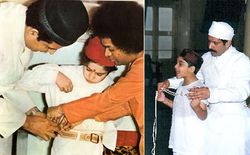
There are customs that are typically unique to the Mazdaens, but were practiced in India. Some of the customs within the Mazdaen community are similar to those of the Hindu Brahmans. For example, the Navjot and vegetarianism.
Spiritual initiation[edit]
"The investure with the Kosti, as described in the Yesht Sade, and alluded to in several places of the Vendidad, appears to be nothing more than the Kaksha, or girdle of the Hindus, blended with some notion of the cord, or Upavita." - The Quarterly Oriental magazine, review and register[200]
Navjot which means new birth is the initiation of a Mazdaen and they are given a sacred thread to wear similar to that of the Yajnopavita ceremony for many Hindus.
Just as the Mazdaen ceremony marks a 'new birth', the Hindu one also does the same. Hence, anyone who receive the Hindu ceremony is called a 'dwija' (twice-born.)
Vegetarianism[edit]
| I allow the good spirits who reside on this earth in the good animals to go and roam about free according to their pleasure. I praise, besides, all that is offered with prayer to promote the growth of life. | ||
—Yasna 12.3, Gāthās, Zhand Avesta[201] | ||
A large section of Parsis[202] are vegetarian and during weddings/navjyots, there is always a "Parsi vegetarian" menu. There are four days in a month where all Mazdaens, even the non-vegetarians are expected not to eat meat in a practice called parhezi which means abstinence. They are Bahman, Mohar, Ghosh, and Ram roj. Meat is also not eaten for three days after a relative passes away.
| Be plant-eaters ('urwar khwarishn', i.e., vegetarian), O you people, so that you may live long. And stay away from the body of useful animals. As well, deeply reckon that Ohrmazd the Lord, has for the sake of benefiting useful animals created many plants. | ||
—High Priest Atrupat-e Emetan (Adarbad, son of Emedan) who officiated after the Arab invasion states in the 11th century CE, Book 6, Denkard | ||
Third century CE Greek biographer, noted in the prologue to his Biography[203] that the Magi priests of Persia "dress in white, make their bed on the ground and have vegetables, cheese and coarse bread..."
The modern Ilm-i Khshnum movement in India advocated vegetarianism too.
Dr. Kenneth S. Guthrie believed that Zarathustra promoted vegetarianism.[204]
Usage of plants in worship[edit]
Both Mazdaens and Hindus use plants in their worship. During group and individual praying, Mazdaens hold a plant. Also, in the Haoma ceremony of Mazdaens, they use the ephedra in the ritual.[205]
Usage of bells in worship[edit]
Mazdaen temples ring their bell during 5 prayer sessions in a day.[206] Some priests ring the bell 9 times a session. Bells are very common in Hindu temples too.
Venerating the same persons[edit]
In Mazdayasna, Ahura Mazda is the Supreme Lord and the other supernatural beings are yazatas.[207] As there are several with a similar name in both Mazdayasna and Hinduism, there are also others whose names are different but are the same persons, such as Sraoesa, who is Bṛhasa of Hinduism.
- Varuna
- See also: Varuna
"Ahura Mazda has created asha, purity, or rather the cosmic order; he has crested the moral and the material world constitution; he has made the universe; he has made the law; he is, in a word, creator (datar), sovereign (ahura), omniscient (mazdao), the god of order (ashavan). He corresponds exactly to Varuna, the highest god of Vedism."[208] - Arthur Lenormant
In the Rig Veda, though Varuna remains a god, his influence lessened as many gods took the side of Indra as their king and many humans took him as their chief god.
| Many a year I have lived with them; I shall now accept Indra and abjure the Father Varuna, along with his fire and his soma (haoma) has retreated. The old regime has changed. I shall accept the new order. | ||
—Rig Veda 10.12.4 | ||
| Varuna | Ahura Mazda |
| "I made to flow the moisture-shedding waters." | "Rain down upon the earth to bring food to the faithful and fodder to the beneficial cow." |
| Rig Veda | Vendidad |
The Vendidad is called in Pahlevi the Zhand-I Jvit Dev Dat. Here the 'Dev Dat' portion of the title refers to the conch of Ahura Mazda. The Dev Dat is mentioned in Hindu scriptures as the conch of Varuna.
There is a strong connection in Hindu scriptures between Varuna and Asuras. For example, the Mahabharata mentions that he receives homage in his palace by asuras. He is also said to live in the sea (any body of water other than a river) with Nagas, and his residence there is known as Asuranam Bandhanam. Then according to the Valmiki Ramayana, Ravana had invaded Rasātāla where lived Varuna, his sons, Nagas, and Daityas. According to the Srimad Bhagavatam[209], Hiranyaksha visted Varuna to seek his advice on whether to fight Vishnu or not (in which Varuna advised the Daitya king to do so to earn Vishnu's grace by being slain by him.) Hiranyaksha there had called Varuna "Adhiraja" (Supreme Lord!) The Mahabharata claims that Varuna governs Rasātāla, 1 of the major strongholds of the Asuras. Hiranyapur, another stronghold (where Prahlad Maharaj governed from) was also affiliated with him. Further, Varuna is the one of the few gods that have Asuras as administrators. Varuna's are Meghavasas in his assembly, and another named Sunabha.
| O Yudhishthira, without anxiety of any kind, wait upon and worship the illustrious Varuna. And, O king, Vali the son of Virochana, and Naraka the subjugator of the whole Earth; Sanghraha and Viprachitti, and those Danavas called Kalakanja; and Suhanu and Durmukha and Sankha and Sumanas and also Sumati; and Ghatodara, and Mahaparswa, and Karthana and also Pithara and Viswarupa, Swarupa and Virupa, Mahasiras; and Dasagriva, Vali, and Meghavasas and Dasavara; Tittiva, and Vitabhuta, and Sanghrada, and Indratapana--these Daityas and Danavas, all bedecked with ear-rings and floral wreaths and crowns, and attired in the celestial robes, all blessed with boons and possessed of great bravery, and enjoying immortality, and all well of conduct and of excellent vows, wait upon and worship in that mansion the illustrious Varuna, the deity bearing the noose as his weapon. | ||
—Section 9, Mahabharata[210] | ||
While the Rig Veda directly calls gods out as Asuras, it also indirectly refers to Varuna as an "Asura of heaven"[211], and latter verse heaven itself is called 'asura'[212]. Also in a verse in which Asura is mentioned, it reads, "our father pours down the waters."[213] Further, the RV says that Agni is born from his (the Asura's) womb.[214] This is important in showing that Agni is a child of Varuna just as the Holy Fire (Atar) is mentioned as the son of Ahura Mazda in the Avesta.
Like Varuna[215], Ahura Mazda is connected to shepherds. When Zarathustra had asked which kind of man enjoys the earth most, Ahura Mazda replied it was the agrarian.[216]Ahura Mazda in the Avesta declares for Aredvi Sura to keep all sentient creatures “just like a shepherd keeps his flock.” Even a Georgian legend states that in pre-Christian times, laypeople would offer sacrifices to the god they called 'Armazi' (Ahura Mazda) by the 'bridge of the magi', and that at night shepherds called on Armazi for help.[217]
Ahura Mazda's connection to Vahiśta goes back to Varuna's relation to Vasiśṭha from Hindu scriptures. For example, The Ramayana mentions that Vasiśṭha was a son of Varuna through Urvashi born at Varunalaya (modern Barnala, Punjab.) He was also said to have turned his son Vahiśta into a scholar by simply accompanying him on a boat trip. Varuna had taught what is called "Bhrgu-Varuni Vidya" to his son Bhrgu of which the essence was "Brahm (God) is nothing but joy."
The name 'Zarathustra' means Golden buffalo, which is because the animals involved in sacrifices to Varuna were usually buffaloes[218] (at least metaphorically.) This is akin to Hindus being named after a vehicle of god, such as Basava or Nandi, the bull of Shiva. These names reflect devotion and subordination as servants of gods.
- Kavi Uṣana
An Ahura of Mazdayasna is known as an Asura in Hinduism. It is then no surprise that we also find Śukra Acharya or Kavi Uṣana, the Guru of the Asuras, being venerated as one of the most holy beings. His connection to Varuna in Hindu scriptures is that he is Varuna's devotee in many instances as seen in Satapatha Brahmana[219]. In the Avesta he is known as Us and later in the Bahram Yasht as Kavi Uṣa.[220]
| This one is known to me here, who alone heard our precepts: Zarathustra, the Holy, he asks from Us, Mazda, and Asha, assistance for announcing, I will make him skilful of speech. | ||
—Yasna 29, Zhand Avesta | ||
Kavi Uṣa is also called Kava Uṣan and Ashvarechao, which means full of radiance just like how his Hindu name Śukra means radiant and how scriptures like the Yoga Vasiśṭha[221] describes him as "radiant young Śukra", or Ramayana[222] describes "Śukra, radiant as the sun, departed."
The Avesta doesn't refer to him as Śukra because that name is reserved as an epithet for Ahura Mazda, who is invoked as, "athra sukhra Mazda"[223] (Kavi Uṣana has many titles.)
Uṣana is also given importance because he descends from Angiras. Mahabharata reads that Kavyas descendants from Kavi.[224] Manu Smriti establishes a Kavi as a descendant of Angiras.[225] Like how Uṣana is a regent constellation in Hindu astrology, he is a star included among the Great Bear constellation, in the Hapto-iringas of the Avesta.[226]
- King Ram
- See also: Rama
Mazdaen scriptures mention a righteous monarch named Ram, whom it addressed Ram Khshatra. Though it doesn't dive into details about the yazata, it usually mentions him together with Mithra. In Hinduism, he is known a Raja Ram, a noble king, "Arya that cared for the equality of all", descendant of Mitra.
| Rama, descendant of the sun ("Mitra"), became friends ("mitra") with Sugriva, son of the sun ("Mitra.") | ||
—Ramayana, 15.26 | ||
There is even one passage in the Avesta that mentions Ram together with Vahiśta, which is symbolic of the relationship in the Ramayana that Ram has with his guru Vasiśṭha[227]. It also shows the relationship between Mithra and yazata Ram.
| We sacrifice unto Mithra, the lord of wide pastures; we sacrifice unto Rama Hvastra. We sacrifice unto Asha-Vahiśta and unto Atar, the son of Ahura Mazda. |
||
—Khorda Avesta 2.7 | ||
Sacredness of the sun[edit]
The sun is like fire, a holy symbol of Ahura Mazda. The Avesta declares:
| This Mithra, the lord of the wide pastures, I have created as worthy of sacrifice, as I, Ahura Mazda, am myself. | ||
—Avesta | ||
Mitra is a god often paired with Varuna in Vedic hymns. There are many Hindus today who worship God Almighty in the form of the sun and they are known as Sauras. The Māga Brahmaṇas are very closely associated with the sun-worship in Hinduism.
Just as the Rig Veda declares that the sun is the "Eye of Varuna"[230], the Avesta[231] it also declares that Mitra is the eye of Ahura Mazda.[232]
Prayer terminology[edit]
Just as Hindus include the word namo in their mantras, such as 'Namo Varunaya'[233][234] or 'Namo Jinanam', Mazdaens too apply the term in the phrases 'Namo Ahurai Mazdai', 'Namo Zarathushtrahe Spitaamahe', 'Namo Amesha Spenta' and 'Namo Heomae'.
'Nemase-te' is another term used by Mazdaens which is the equivalent of Sanskritic Namaste.
'Neueediem' has the Sanskritic equivalent 'nivedayami', which has been used in Hindu verses like "Om Owing Saraswatai nivedayami."
Praying ceremony for departed ancestors[edit]
Both Mazdaens and Hindus offer prayers for their ancestors, and the procession meant solely for their well-being is known as the 'Dhup Nirang' (Gujarati for ritual of offering of frankincense) or 'Nirang-e Rawan-e Guzashtagan' (Persian for Ceremony for the souls of departed ones) amongst Mazdaens[235] and as 'Śrāddha' amongst Hindus.
Corresponding festivals of Mazdaens and Kashmiri Hindus[edit]
Just as Mazdaens celebrate Ahura Mazda (Varuna) and King Jamshed, so too do Kashmiri Hindus. The Mazdaen calender new year, celebration Nuvruz, is the same festival as that of the Kashmiri Hindus, Navreh.[236]
During the festivity of Tararatrih, on the 14th of the dark half of Magha, King Yama is worshiped.[237] On Varuna Panchami, Varuna is worshiped.[238] Varuna is worshiped again on the 5th day of the festivity of Yatrotsava, whereby Hindus are encouraged to visit his 'abodes' or temples.[239]
Celebrating god Mitra has historically also been a part of Kashmiri culture. Till the 11th century CE, the Kashmiri Pandits celebrated Mitra (Mithra) Punim, on the fourteenth or full moon night of the bright fortnight (Śukla Pakṣa) of the Hindu autumn month of Ashvin or Ashwayuja. Similarly, the Mazdaens celebrate Yalda as the birth of Mithra.[240]
Usage of fire in ceremonies[edit]
Fire is used in processions of both Mazdaens and Hindus. Their temples use fire altars for performing the rituals. Fire altars have been discovered in the Indus Valley city of Kalibangan in northern Rajasthan state, showing that even the ancient society then revered fire as sacred.
Fire Hindu temples also exist in the Himalayas wherein flames are constantly burning.
- 3 significant fire-temples
- Jawalaji Bhagvati (Khrew, Kashmir)
- Jwalamukhi (Dharamshala, Himachal Pradesh)
- Jwala Mai (or Salamebar Dolomebar Gomba or Mebar Lhakang Gomba in Muktinath, Nepal)
The significance of the Jawalaji Bhagvati temple is that it is contains the same self-burning flame mentioned as "Samvartaka" in the Vayu Purana. Another fact is that not only has the flame burnt through a natural spring since time immemorable but in the historical Kashmiri festival of Haar Chaturdashi (Hara Chodah), the celebration on the 14th day of Haar month takes place there. According to a song, even Emperor Akbar [who in legend had destroyed the Jwalamukhi temple at Dharamshala] traveled barefoot from Delhi to Jawalaji Bhagvati for paying respect. This was after, according to the same song, he decided to test the eternal flame by having water thrown at it but it kept burning.[241]
Ceremonies[edit]
"Although sacrifices are reduced to a few rites in the Parsi religion now-a-days, we may discover, on comparing them with the sacrificial customs of the Brahmans, a great similarity in the rites of the two religions." - Martin Haug[242]
In addition to the ceremonies of Navjot and praying for ancestors, there are other similar ones for the Mazdaens and Hindus.
| Mazdaen | Hindu | Entails |
|---|---|---|
| Afrigan | Apri | The ceremony is meant to invite persons; during Afrigan a deceased person or an angel, and during the Apri a god. |
| Darun | Darsha Purnama | During the Darun, sacred bread is offered, whereas on the Darsha Purnama the sacrificial cakes are offered. |
| Gahanbar | Chaturmasya Ishti | Gahanbar involves offering sacrifices 6 times a year, whereas the Chaturmasya entails sacrifices given 4 times. |
| Yajishn (Ijashne) | Jyotishthoma | The both, the twigs of sacrificial plant ('Homa'/'Soma') itself are brought to the sacred spot where the procession occurs and the juice is extracted during the recital of prayers. The Yajishn (Ijashne) implements a plant that grows in Iran whereas the Jyotishthoma implements the Putika. |
Mouth covering of priests[edit]
Mazdaen priests wear the padam over their mouth just as many Jain monks wear the mohapatti. The purpose of the Mazdaen clad is to prevent pollution through the products of the mouth when handling the sacred fire.
Purification before worship[edit]
Because yazatas (venerable spirits) are pure, to pray to them it is encouraged that the worshiper be clean, and so devotees wash their hands and faces.
Hindus, although they pray in several occasions and environments, normally they perform puja in the morning after having bathed.
Footwear removal before entering temples[edit]
Mazdaens are in most temples required to remove their footwear because the temple is very sacred and because of its sanctity it is not to be contaminated with either spiritual or material filth.
Hindu temples too require the visitor to remove footwear for the same reason.
Astrology[edit]
Zarathustra has been written in Mazdaen scriptures of having practiced the science and the Kitāb al-mawalid (also known as the Kitāb Zardusht), an astrological scripture, is attributed to a 'Zardusht' in the scripture itself, and certain modern scholars believe that this Zardusht may in fact be the original Zarathustra.
Just as several Brahman priests of India have historically practiced astrology, and to this day many still do, the priests in Zarathustra's time applied the science too. When Zarathustra was in the womb, his mother had a frightful dream, so she consulted an astrologer that assured her she had no reason to fear for his birth and he predicted the baby's glorious future.[243]
Hindu astrological similarities to that of Mazdaen texts translated by Theophilus have been noticed by Pengree who believe this was likely because Hindu Brhadyatra and other works by Varahamihira were translated into Persian, which were the ones Theophilus had read.[244]
Sky burials[edit]
In one period of history, even feeding corpses to vultures as opposed to either cremating them or burying them was the norm in parts of the Punjab region. Aristoboulos, when visited Taxila,[245] had stated that the dead were "thrown out to be devoured by vultures."[246] This practice is still observed in parts of western Tibet which is modern-day Avestan Ranha or Vedic Rasātāla.
Raghunath Rai discusses that leaving corpses for birds and beasts was historically one way that Indians since ancient times had disposed of the dead.[247] He also leads to the conclusion that this was practiced by Indus Valley Civilization residents of Mohenjo Daro because skeletons have been found in public places and within a room.
In the Mahabharata King Astaka mentions three different kinds of corpse-disposal; cremation (dahyate), burial (nikhanyate), and decay (nighrsyate).[248] Vidura then mentions 2 modes; cremation on a funeral pyre or the body is left for birds to consume.[249] King Virata of the Matsya Dynasty of Pubjab, after he was slaughtered by the Kauravas had his corpse offered to vultures by Dronacharya.
Even in South India, decomposition by vultures wasn't unheard of in certain places. The author of the Manimekalai writes of exposure of the corpse to be devoured by vultures and jackals as 1 of 5 decomposition methods.[250]
Zarathustra as a cave mendicant[edit]
Ancient Greek writers Eubulus, Porphry and Dio Chrysostom had written of Zarathustra's time living in a mountainous cave wherein he is said to have lived for ten years. The way in which he lived is of a similar description to that of Brahmans of that time. This was "Mount Kāf [which is the] mountain Usihdatar,..."[251]
The Bauddh Vessantara Jātaka gives this description of ascetics: "looking like a Brahman with his matted hair and garment of animal skin with his hook and sacrificial ladle, sleeping on the ground and reverencing the sacred fire".
Why Zarathustra wore knotted-hair and a turban[edit]
The turban is mentioned in the Atharva Veda as an ushnisha.[252]
Vasiśṭha is associated with the turban more than other Vedic sages. In the village of Vashisht in Himachal Pradesh during the birthday of Vasiśṭha his statue in the main temple of the village is adorned with a white dhoti and turban.[253]
In the Rig Veda and Kathaka Grhya Sutra, Vasiśṭha wears a kapardin or knotted-hair.
Applying ash to forehead[edit]
Mazdaean many times in their ceremonies apply Rakhya ash from a ceremonial fire on their foreheads just as Hindus many times in rituals mark foreheads with tilaks of either ash or paint.
Bull statues in front of temples[edit]
Some Mazdaean temples have Bahman Ameshaspand winged-bulls at temple entrances just as many Hindu temples have Nandi (or Vasava) bulls at entrances.
Depicting figures as animal-headed[edit]
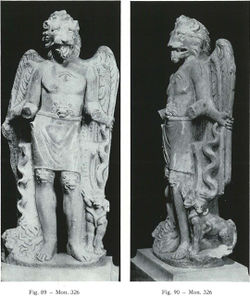
Like many Hindu icons, in Mazdaen ones too, gods are depicted as animal-headed sometimes.
Social classification[edit]
Whether castes in any Mazdaen society, apart from the Brahman one (Athravan), existed or not is certain. However, we know that the laborforce of society in Mazdaean scriptures is categorized like the one that exists in India; Athravan/Sodalen (Priest), Rathaestar/Ritter (Warrior), and Vastrya-fsuyant/Varazana/Dragu/Driyu (Agriculturalist.) In fact, Zarathustra's 3 sons were said to be the heads of these classes ('pistra') — Isatvastra of the priests, Urvatatnara of the warriors, and Khvarechithra of the agriculturalists. Eventually, a Huiti (Artisan) class came to be recognized. Further, Zarathustra is praised as the prototype of the non-artisan castes.[254]
The Mahabharata mentions that in Sakadwipa (Iranian Plateau and Central Asia but more specifically, Balkh) there are four castes; "They are the Mrigas (Brahmans), the Masakas (Kshatriyas), the Manasas (Vaisyas), and the Mandagas (Sudras.)"[255]
Good thoughts, good words, good deeds[edit]
The greatest Mazdaen principle is of 'good thoughts, good words, good deeds' and this is a Vedic principle as well known as the Trikarana Shuddhi.
Forehead-marking[edit]
While among Hindus, the tilak marks applied on the forehead are commonly known, it is also a custom that some Zoroastrians have followed from their scriptures, which they call hanoz. Rakhia (fire-wood) and bhasam (sandalwood) ushtan (ashes) being used to mark between the brows is a practice followed in some Zoroastrian temples.
Ritual offerings[edit]
Mazdeans in the past much more frequently made offerings to pools in caves (i.e., Chale Ghar cave mines), which included ceramic pots containing fruit stones, nuts, grains, and pomegranate seeds.[256]Many Hindus make offerings, be it water, milk, or food.
Mazdeans today still make offerings to fire, as do Hindus.
Symbolisms and Beliefs[edit]
Dualism[edit]
- See also: Dvaita
Mazdayasna views the universe as a place of mingling between Asha (good) and Druj (evil.) Known in Sanskrit as Dvaita, it relates to how the universe is divided into matter and spirit. Matter is ignorance and an illusion (Maya) and corrupts souls, while spirit is holy and true.
Some modern scholars have compared this dualism in Mazdayasna to the ideas of Purusha and Prakriti wherein the former is spirit and the latter is matter. S. Taraporewala for example, in the early 20th century had used the terms Purusha and Prakriti to explain the dualism of good and evil.
Spenta and Spanda[edit]
While Mazdayasna writes of holy spirits as Spenta Maniyus, the word 'spenta' itself means energy, and the Sanskrit equivalent is 'spanda', meaning energy or motion.
In Kashmiri literature the term Spanda has been used more frequently than everywhere else, even producing 2 scriptures called the Spanda Sutras and Spanda-nirṇaya.
Four ages of humanity[edit]
There are 4 ages according to Zoroastrianism[257], much like Hinduism's 4 yugas, with the first being the most righteous of times in both religions and then as the ages succeed, they become worse than the preceding age. Finally in the last age, a godly figure arises and vanquishes the most evil people of the world. In Zoroastrianism, the messianic figure is Shaosyant,[258] while in Hinduism it is Kālki.
Ahura as Buddha[edit]
Ahura Mazda has many names. In the Khordeh Avesta he is given 101 names, including Varuna.
| Ahum cha daenam cha Baodhas cha. | ||
—Khordeh Avesta[259] | ||
The translation is that Ahura Mazda declares that he is religion (Mazdayasna) and Buddha. Buddha is used here because it means that Ahura Mazda and his religion are perfect, as Buddhahood is the state of perfection.
This ties into the concept of Moksha, which is the state of perfection and is what any Buddha (Awaken person) attains upon death.
Interestingly, Ahura Mazda has also been called Buddha Mazda, specifically in Afghanistan where Buddhism was a major religion.
Reincarnation[edit]
Reincarnation is mentioned in Zarathustra's Gāthās.
| "But evil-rulers, evil-doers, evil-speakers, those of evil-egos, evil-thinkers, and followers of falsehood, the souls of all such, because of the fouling of their original lustre, will return (or go forth — "paiti yeinti") to the Abode of Falsehood (Drujo Dgmane) where, in truth, their existence shall be."[260] | ||
—Yasna 49.11 | ||
In the passage above, "will return" refers to impure souls having to take rebirth because inability to attain heaven due to their sins. This means, like any Brahman spiritualist, Zarathustra was propounding Moksha.
| "A devout Mazdaen followed the path of righteousness, having good actions and prayed throughout their lifetime. Dadar Ahura Mazda, render that divine soul the divine fruit so that henceforth, no rebirth takes place."[261] |
||
—Yasna 34.15 | ||
Sangelaji in his Eslam va Mousiqi writes that the Ghollat class of religious scholars from Iran believed in reincarnation.[262] This means that the knowledge of reincarnation was passed down to the Ghollats by the early Mazdaens.
Some Mazdaen scriptures refer to rebirth as tanasokh. 'Farhangsar' is from a transmigration from a human body to another human body, 'nangsar' is from human to animal, and 'tangsar' is from human to plant. Sometimes 'sangsar' is referred to where a soul goes from a human body to that of a mineral.
The Magi were reported by Porphyry in 3rd century to be vegetarian because they believed in reincarnation[263] (i.e., harming an animal leads to rebirth as a animal.)
Interestingly enough, an indirect usage of 'rebirth' is applied for the Navjot (new birth) ceremony.
Divine Council of 33 Persons[edit]
- See also: Divine Council
Just as in Hindu scriptures there are 33 gods that uphold the universe, so too are there is a group of 33 gods in Zoroastrianism[264]. These 33 are invoked in the Faresta (Angel) ceremony, wherein the Afringan and Baj are recited for them. The Rivayet also mentions 33 yazatas.[265] One of those member gods is the God Almighty, Ahura Mazda, and this can be seen because the scriptures mention there are 33 yazatas in total - a group with 7 members being Ameshaspands (one of whom is described as Ahura Mazda[266].)
| And I announce and complete (my Yasna) to all those who are the thirty and three lords of the ritual order, which, coming the nearest, are around about Hâvani, and which (as in their festivals) were inculcated by Ahura Mazda, and were promulgated by Zarathustra, as the lords of Asha Vahiśta, who is Righteousness the Best.[267] | ||
—Zhand Avesta, Yasna 1.10 | ||
Zoroastrianism, like most other Arya Samuday dharms believes in a divine council of 33 gods, but it emphasizes that Ahura Mazda (Varuna) on that council is its chief and is God Almighty. Varuna in the Rig Veda is mentioned as governing the council.[268]
This divine council is called in Zoroastrian scriptures Ratavô Thrayasca Thrisãsca, in Hindu scriptures Trayastrimsati Koti, in Bauddh shastras Trayastrimsa Deva, in Sikh shastras Thaethees, and in Bonpo shastras as Sumchu Tsasumpai Liu[269].
Dharmachakra[edit]
- See also: Dharmachakra
The wheel is a sacred symbol in Zoroastrianism as in Hinduism. The Avesta speaks of "turning of the wheel", which Max Muller himself thinks "smacks of Buddhism" as he writes.[270]
Religion referred to 'Law'[edit]
Both Mazdaens and Hindus refer to religion as 'Law'; 'Daena' for Mazdaens and 'Dharma' for Hindus.
The Mazdaens also call Mazdayasna 'Daena Vanghui' (Good Religion) while Hindus call their's Arya Dharma (Noble Religion.)
Fire trial[edit]
Taking the "test of fire" is an allegory in both Mazdayasna and Hinduism for proving one's innocence through penances.[271] According to the Valmiki Rāmāyaṇa, Sita had taken an Agni Parikṣā[272] to prove her fidelity to Rama. In the Shahnameh Siyavash had passed through fire to prove he was truthful.[273][274]
"It is added, that he passed twenty years in the desert and the love of wisdom and justice obliged him to retire from the world to a mountain where he lived in solitude; but when he came down from thence there fell a celestial fire upon it, which perpetually burned; the king of Persia accompanied with the greatest lords of his court, approached it for the purpose of putting up prayers to God; that Zoroaster came out from these flames unhurt;..."[275]
Piousness of fire[edit]
Fire is used in both Mazdaen and Hindu ceremonies as it is believed to be holy by both the communities. It is invoked and prayers exist wherein fire itself it adorated even when fit is not physically not being venerated. Ceremonies that involve fire are of initiation[276] and sacrifices.[277]
Sacredness of cows[edit]
- See also: Animal rights
|
Yea we worship the Creator Ahura Mazda and the Fire, Ahura Mazda's son, and the good waters which are Mazda-made and holy, and the resplendent sun of the swift horses, and the moon with the seed of cattle...and we worship the soul of the cow of blessed endowment. |
||
—Gāthā Yasna 16.4, Avesta | ||
The cow is very sacred in Zoroastrianism - the most sacred of all animals. 'Geush urvan' is a metaphorical term to describe souls of animals wherein 'geush' by itself just means cow.
|
"Here am I, one who has touched the corpse of a man, and who is powerless in mind, powerless in tongue, powerless in hand. Do make me clean." If they will not cleanse him, he shall cleanse his body with gomez and water; thus he shall be clean. |
||
—Fargard VIII.104, Avesta | ||
The Avesta declares that Gomez[278] (Vedic 'Gomedha') is an important sacrifice, which involves cow urine. In the 9th chapter of the of the Vendidad of the Avesta, the purification power of cow urine is dilated upon.[279] It is declared to be a panacea for all bodily and moral evils. It is drunk as well as applied externally just like the Hindus also.[280] Urine of the bull, called "nirang" is brought to the house of an orthodox Parsi every morning and is applied to the face, hands and feet like the cow's milk.[281]
Sacredness of the environment[edit]
Both Mazdaens and Hindus regard the environment as an important resource like animals which cannot be abused. Yasna Haptanghaiti[282] declares, "apo at yazamaide" or "We worship the waters." Mazdaens often offer libations to the rivers just as they do to the sacred fire, similar to how Hindus do by placing oil lamps or flowers into a river sometimes during their worship.
Apart from the Mt. Meru (Mazdaen Hara), Mt. Kailash is also revered in Mazdayasna as "Kangri". There are also many other mountains that are considered sacred, and they are mentioned in the Avesta.
Universe being from an egg[edit]
Like in Hinduism [and Yungdrung Bon], in Mazdayasna, the universe is from an egg.
| The sky, earth, waters, and everything else are inside the egg-shaped [vault] that is like the egg of the birds. The sky above the earth and below the earth, like an egg, is established by the work of the creator Ahura Mazda; and the earth is in the centre of the sky, like the yolk in the centre of the egg. | ||
—Menog-i Khrad[4] 44.8-10 | ||
In the Bundahisn and other Pahlavi texts, the cosmological egg-idea is similarly repeated.[283]
Humans born from sacrifice of a super being[edit]
- See also: Purusha Sukta
According to Mazdaen stories, Gayomard was a great being, upon whose self-sacrifice were born the first pair of humans and vegetation.[284] This story is similar to the Rig Vedic lore of self-sacrifice of the cosmic Purush from whose sacrificed body came all the parts and parcels of the universe. Gayomard is mentioned in the Gathic Avesta[285]and in the Pahlavi Denkard[286] the study of his sacrifice is given.
Immortality of souls and souls of animals[edit]
Mazdayasna believes that animals have souls and the phrases used for describing an animal's soul are 'pasu urvan'[287] and 'geush urvan' (cow soul.) Geush urvan is another phrase for the souls of animals, because the cow here is used as a metaphor for animals in general just as in Hindu societies a 'goshālā'[288] refers to animal shelters.
Days of the week relating to gods and planets[edit]
The gods and planets which represent the days of the week are the same for the Mazdaens and Hindus.
| Sunday | Monday | Tuesday | Wednesday | Thursday | Friday | Saturday | |
| Planet | Sun | Moon | Mars | Mercury | Jupiter | Venus | Saturn |
| Hindu deity | Ravi | Soma | Mangala | Buddha | Guru | Shukra | Shani |
| Mazdaen deity[289][290] | Mithra | Vrarayna | Tiriya | Ahura Mazda | Aredvi Anahita Sura | Kayvanu |
Scriptural verses and styles[edit]
As Zarathustra was a Brahman, he was familiar with the Vedas and wrote Vedic verses to be revered. This portion of the Avesta is known as the Gāthās meaning Songs, just as Hindus scriptures are often either Gāthās or Gitās. The Brahmana scriptures refer to 'gāthās' and 'abhiyajnagāthās' as the verses of the Vedas.[291]
Incarnations[edit]
- See also: Avatāra
An incarnation is known as an avatār. The Avesta[292] reads that there were ten forms of Verethraghna, whose equivalent Sanskrit name is 'Vritrahana', which appeared to Zarathustra, similar to the ten major forms:[293]
| Mazdaen | Hindu |
|---|---|
| Wind | Vāyu |
| Bull | Ṛṣabha (the ascetic whose name means Bull) |
| Horse | Hayagriva (whose name means Horse-headed) |
| Camel | |
| Boar | Varāhā (whose name means Boar) |
| Youth | Vāmana (the child avatār) |
| Raven | Garuda |
| Ram | |
| Buck | |
| Man | Rama, Kṛṣṇa, Parshurama, etc. |
In modern times Mazdaen scholars have inquired more into the idea of incarnations, and some have written of Zarathustra himself to have been one of an angel. The Ilm-i Khshnum occult movement belief was that Zarathustra was an avatar of an Amesha Spenta.
Division of Earth into seven continents[edit]
- See also: History of ancient geography
According to the Avesta the world consists of seven continents wherein the one in which Zarathustra lived is Khvaniratha with Mt. Hara at the center just as Hindu scriptures mention Jambudvipa as the Indian Plateau and some adjacent regions with Mt. Meru at its center.
The reason Khvaniratha or Rattling Chariot is another name of Jambudwipa is because Jambudwipa is said to have been shaped like a chariot.
| On its (Mt. Sumeru's) outside is the Iron Wall, which measures 3,602,625 miles. On its south side is dZambuling [Jambudvipa, the continent we live on, essentially our world]; it has the shape of a chariot. Magadha is the Middle Country of this dZambuling; it is the place Buddhas of the Three Times appear. | ||
—Elucidation of the Knowable[294] | ||
Related Articles[edit]
- Varuna
- Yama
- Śukra Acharya
- Asuras
- Daityas
- Hindu mythology explained
- The spread of Hinduism in the Iranian Plateau
- History of ancient geography
- Yama's Kingdom is in Kashmir
- Varaha's Khetra is in Kashmir
- Ravana's Lanka is in Kashmir
- Hanuman's Kishkindha is in Kashmir
- Olmo Lungring is in Karakoram
- Legendary Mt. Yushan is in Ladakh
- Modern identification of Rig Vedic rivers
- Kingdoms of Asura Dominance
External Resources[edit]
- THE RIGVEDA: A Historical Analysis By Shrikant G. Talageri
- Rigveda and Avesta: The Final Evidence
- The Indian Religion in Ancient Iran and Zarathushtra by Subhash Kak
- Asuras and Daevas in the Indo-Iranian Connection by Jayaram V
- The Relationship of Vedic Sanskrit and Avestan (Old Persian) by Thayer Watkins
- Vedic Elements in the Ancient Iranian Religion of Zarathushtra by Sanskriti
- “Srinagar’s Parsee Zoroastrian Aramgah” By Parsee Times, April 2, 2022
References[edit]
- ↑ P. 149 Uygur Patronage In Dunhuang: Regional Art Centres On The Northern Silk Road By Lilla Russell-Smith
- ↑ The Frove: A Connecting Link Between Zoroastrianism and Kashmir was a book written by him
- ↑ P. 32 Journal, Issues 17-24 By K.R. Cama Oriental Institute
- ↑ P. 35 Journal, Issues 17-24 By K.R. Cama Oriental Institute
- ↑ P. 64 Indo-iranica, Volume 28 Iran Society
- ↑ Atharvan is a descendant of Vasiśṭha)
- ↑ Yasht 33.6; Zaotar means fire-priest and its Vedic Sanskrit equivalent is hótar
- ↑ Manthran means the mantra-maker-and-reciter.
- ↑ Datta means given.
- ↑ Yasht 31.5.10; Sanskrit 'Rṣi' meaning seer
- ↑ Sanskrit 'Ratu' meaning guide
- ↑ The Vedas: An Introduction to Hinduism’s Sacred Texts By Roshen Dalal
- ↑ Mount Ushidaran, where he lived on a diet of plants
- ↑ P. 391 Anacalypsis: An Attempt to Draw Aside the Veil of the Saitic Isis; or An Inquiry into the Origin of Languages, Nations, and Religions, Volume 1 By Godfrey Higgins
- ↑ P. 65 Christ and the Taurobolium: Lord Mithras in the Genesis of Christianity By Duncan K. Malloch
- ↑ P. 48 The Zend Avesta By F. Max Muller
- ↑ Greater Bundahishn Chapter 9.3
- ↑ Vayu Purana 2.4.34-48
- ↑ Brahmanda Purana 2.3.1.34-48
- ↑ Jaiminiya Brahmana 3.263
- ↑ Satapatha Brahmana 4.5.1.8
- ↑ Aitareya Brahmana 3.34
- ↑ Gopatha Brahmana 1.1.1-9
- ↑ Khordad Yasht IV.10: "O Zarathustra! let not that spell be shown to any one, except by the father to his son, or by the brother to his brother from the same womb, or by the Âthravan to his pupil 6 in black hair, devoted to the good law, who, devoted to the good law, holy 7 and brave, stills all the Druges."
- ↑ P. 202 The Sacred Books of the East, Volume 23 edited by Friedrich Max Müller
- ↑ A Treasury of Indian Wisdom: An Anthology of Spiritual Learning By Karan Singh
- ↑ RV 6.16.17; P. 33 The Bharadvājas in Ancient India By Thaneswar Sarmah
- ↑ RV 6.15.17; P. 33 The Bharadvājas in Ancient India By Thaneswar Sarmah
- ↑ Yasna 46.6
- ↑ Yasna 46.3; 48.12
- ↑ Yasna 43.15
- ↑ Rig Veda 1.31.17; 1.45.3; 1.139.9
- ↑ Atharva Veda 7.50.1
- ↑ Rig Veda 1.1.6
- ↑ Rig Veda 10.62.5
- ↑ Rig Veda HI: 53: 7
- ↑ Markandeya Purana 73.13; Kurma Purana 12
- ↑ Within the 14th Manavatara 1 of the Saptarṣis will be "Shukra Vasiśṭha"; Narasimha Purana
- ↑ Rig Veda 10.67; Matsya Purana 217-218
- ↑ P. 502 Encyclopedia Iranica, Volume 14, Part 5 By Ehsan Yar-Shater
- ↑ (Yima.) It means archangel.
- ↑ P. 57 Zoroastrianism and Judaism By George William Carter
- ↑ She is Rta.
- ↑ P. 328 The Vyavahára Mayúkha, in Original, with an English Translation, Parts 1-2 By Vishwanath Narayan Mandlik
- ↑ Zhand Avesta Yasht 17.20; P. 254 The Esoteric Codex: Zoroastrianism By Gerardo Eastburn
- ↑ Zhand Avesta Yasna 1.4, 2.4, 3.6, 4.9, 6.3, 7.6, 17.3, 22.6, 59.3, 62.3, etc; P. 41 The Esoteric Codex: Zoroastrian Legendary Creatures By Major Ranft
- ↑ P. 19 The Delhi University Publications, Issue 1 By University of Delhi
- ↑ P. 123 Encyclopaedic Dictionary of Puranas, Volume 1 By Swami Parmeshwaranand
- ↑ P. 408 The Journal of the Bihar Purāvid Parishad, Volumes 7-8 by Bihar Puravid Parishad
- ↑ P. 96 Original Sanskrit Texts on the Origin and Progress of the Religion and Institutions of India, Volume 1 edited by John Muir
- ↑ Vaśiśṭha means the people of the lineage.
- ↑ Yasna 3.11, Zhand Avesta, THE YASNA ADVANCES TO THE NAMING OF THE OBJECTS OF PROPITIATION
- ↑ Vahistoistri Gāthā, Yasna 53
- ↑ P. 44-45 Persian Literature - A Bio-Bibliographical Survey: Poetry of the Pre-Mongol Period, Volume 5 By Francois De Blois
- ↑ P. 21-22 A Comparative Study of Religions By Y. Masih
- ↑ P. 106 Journal of the Asiatic Society of Bengal edited by The Secretaries
- ↑ P. 106 Journal of the Asiatic Society of Bengal edited by The Secretaries
- ↑ P. 409 The Wiley-Blackwell Companion to Zoroastrianism edited by Michael Stausberg, Yuhan Sohrab-Dinshaw Vevaina
- ↑ P. 409 The Wiley-Blackwell Companion to Zoroastrianism edited by Michael Stausberg, Yuhan Sohrab-Dinshaw Vevaina
- ↑ P. 318 4 Vedas and Other Sacred Texts of the East By Anonymous
- ↑ P. 138, The Foreign quarterly review [ed. by J.G. Cochrane]. edited by John George Cochrane
- ↑ Zhand Avesta Yasna 90.5; P. 249 The Zend Avesta, Part III (SBE31) By L.H. Mills
- ↑ 101 Names of God, Sad-o-yak nâm-i-khodâ
- ↑ Iran Names
- ↑ P. 71 Israel and Hellas III: The Legacy of Iranian Imperialism and ..., Volumes 1-3 By John Pairman Brown
- ↑ P. 89 In Search of Vedic-Harappan Relationship By Ashvini Agrawal
- ↑ Gāthā 46.6 P. 68 The hymns of Zoroaster usually called the Gathas By Kenneth Sylvan Guthrie and Henry Howard Linton
- ↑ Old Iranian Online Avestan: Master Glossary
- ↑ RV 24.14
- ↑ It is the Translated Avesta.
- ↑ It is the Small Avesta.
- ↑ Gāthās are the Songs or Yasnas meaning Sacrifices.
- ↑ Shasta Yasna 51
- ↑ P. 262 The Aryan Ecliptic Cycle: Glimpses Into Ancient Indo-Iranian Religious History from 25628 B.C. to 292 A.D. By Hormusjee Shapoorjee Spencer
- ↑ Mahabharata Udyoga Parva Chapter 43:4
- ↑ P. 17 The Zoroastrian Faith: Tradition and Modern Research By Solomon Alexander Nigosian
- ↑ Rig-Veda A Historical Analysis By Shrikant G. Talageri
- ↑ P. 118 An Outline of the Future Religion of the World: With a Consideration of the Facts and Doctrines on Which it Will Be Based By T. Lloyd Stanley
- ↑ Avesta Yasna 9.13-14 and 17
- ↑ P. 586 Antiquity Unveiled: Ancient Voices from the Spirit Realms By Jonathan M. Roberts
- ↑ It means New Year.
- ↑ It is the term for devils in Zoroastrianism.
- ↑ Rig Veda VII.33.1; 83.8
- ↑ Rig Veda tr. By Ralph T.H. Griffith; P. 16 Rigvedic Society By Enric Aguilar i Matas
- ↑ P. 45 Sheikh Noor-ud-din Wali (Nund Rṣi) By G. N. Gauhar
- ↑ "...anumatae daēnāyai anuxtae daenayai anuvarshte daenayai." - Aredvi Sura Yasht (Yasht 5.105)
- ↑ Western Anavas were Yaudheyas, Ambasthas, Shibis, Sindhus, Sauviras, Kaikeyas, Madras, Vrsadarbhas
- ↑ "tram jayanto nv asademagnina veyo anu varta" (Atharva Veda 18.8)
- ↑ Vrtlikara 4.2.118
- ↑ Kurma Purana 12
- ↑ It is later written of as 'Ragha', and even later as 'Rai'.; Pahvali Vendidad Chapter 1, "Zartusht min Zak Zinak Yehvunt"
- ↑ Bundahishn 20.32 and 24.15; It was later called as 'Darji'.
- ↑ Vendidad chapter 19.4; P. 4 Cultural and Religious Heritage of India: Zoroastrianism edited by Suresh K. Sharma, Usha Sharma
- ↑ Sopore tehsil
- ↑ In Kreeri Tehsil, Rampora Rajpur, Raj Pora in Tangmarg tehsil
- ↑ Bundahishn 20.32
- ↑ Himalayan Frontiers of India: Historical, Geo-Political and Strategic Perspectives edited by K. Warikoo
- ↑ "Zartusht min zak zinak yehvunt."
- ↑ P. 58 Medical Geography By Ishtiaq A. Mayer
- ↑ Vendidad 19.4
- ↑ P. 362 The Arctic Home in the Vedas: Being Also a New Key to the Interpretation of Many Vedic Texts and Legends By Bal Gangadhar Tilak
- ↑ P. 254 Sources of the history of India, Volume 5 By Siba Pada Sen
- ↑ P. 77 The Nīlamata Purāṇa: A critical edition & English translation By Ved Kumari
- ↑ P. 184 The Ruling Races of Pre-historic Times in India, Southwestern Asia, and Southern Europe Volume 1 By James Francis Katherinus Hewitt
- ↑ P. 279 Prabuddha Bharata: Or Awakened India, Volume 110 By Vivekananda (Swami), Advaita Ashrama
- ↑ P. 467 Kalhana's Rajatarangini: a chronicle of the kings of Kasmir, Volume 2 By Kalhana
- ↑ Adpal, Bahuda, Virnag, Vitasta/Veda-Vitasta, Vyeth/Veth, Hydaspes of Alexander's historians, Bidaspes of Ptolemy
- ↑ Bundahishn 24.14
- ↑ Nilamata Purana 1437
- ↑ Zadsparam 22.5.12; P. 162 Pahlavi Texts, Volume 47 By Edward William West
- ↑ P. 76-77 Pahlavi Texts, Part I (SBE05) By E.W. West, tr. [1880]
- ↑ P. 79 Part 1, Note 1 Pahlavi Texts By Dr. West; Civilization of the Eastern Irānians in Ancient Times By Wilhelm Geiger, Darab-Dastur Peshotan Sanjānā
- ↑ P. 254 Conflicts in Jammu and Kashmir: Impact on Polity, Society and Economy By V R Raghavan
- ↑ Bundahishn 11.A.7 (no. 1)
- ↑ Haramukh Mountain in Kashmir
- ↑ Yasht 10.88; P. 71 The Oxford Handbook of Iranian History By Touraj Daryaee
- ↑ P. 136 A History of Zoroastrianism: The Early Period edited by Mary Boyce
- ↑ P. 77 Studies in the Religious Life of Ancient and Medieval India By Dineschandra Sircar
- ↑ "The mountain Kāf, as it is called by our common people, is with the Hindus the Lokaloka.", I.249 India: An Account of the Religion, Philosophy, Literature, Geography, Chronology, Astronomy, Customs, Laws, and Astrology of India about A, Volumes 1-2 By Muḥammad ibn Aḥmad Bīrūnī
- ↑ "Where this great stream, by the natives called the Sind and Neelab (names of the Indus), breaks from the north through the mountain gorge, commences Hindu-Koh, the real Caucasus and Imaus of the ancients, Kaf, or Kauf, of Arabian writers, a region so elevated that the greater portion is covered with permanent snow.", P. 363 The Natural History of the Human Species: Its Typical Forms, Primeval Distribution, Filiations, and Migrations By Charles Hamilton Smith, Samuel Kneeland
- ↑ Mahabharata verse 12,795: "Sringam Himavatah param"
- ↑ P. 76 THE INTRODUCTION OF IBN KHALDOUN: مقدمة ابن خلدون [انكليزي] By AL-IMAM ABDULRAHMAN IBN MOHAMMED IBN KHALDOUN
- ↑ P. 234 Al-Hind, the Making of the Indo-Islamic World: Early Medieval India and the Expansion of Islam 7th-11th centuries By André Wink
- ↑ Ṛgvedic people not Harappans, Naditama Saraswati is Helmand in Afghanistan: Rajesh Kochhar By Nithin Sridhar - December 16, 2015
- ↑ P. 200 The Persian Empire: A Historical Encyclopedia By Mehrdad Kia
- ↑ P. 112 The Age of the Parthians edited by Vesta Sarkhosh Curtis, Sarah Stewart
- ↑ Both of them obtained high positions within King Vishtaspa's court.
- ↑ Avesta Yasna 29.11, 44.11, 46.14, 51.16; P. 13 Zoroastrian Faith: Tradition and Modern Research By Solomon Alexander Nigosian
- ↑ Yasht 9.26, 13.99-100; P. 13 The Zoroastrian Faith: Tradition and Modern Research By Solomon Alexander Nigosian
- ↑ Denkard 7.4.40; P. 13 The Zoroastrian Faith: Tradition and Modern Research By Solomon Alexander Nigosian
- ↑ The Bhaktavijaya; P. 69 Mapping Histories: Essays Presented to Ravinder Kumar edited by Ravinder Kumar, Neera Chandhoke
- ↑ The Natural Genesis, Volume 2 By Gerald Massey
- ↑ INDIA and my Persian garden By Barbara Athanassiadis
- ↑ P. 460 The Contemporary Review, Volume 40
- ↑ P. 248 A Vocabulary of the Kashmírí Language: In Two Parts : Kashmírí-English, and English-Kashmiri By William Jackson Elmslie
- ↑ P. 461 The Contemporary Review, Volume 40
- ↑ P. 97 Cultural and Religious Heritage of India: Zoroastrianism edited by Suresh K. Sharma, Usha Sharma
- ↑ P. 224 The Indian Evangelical Review, Volume 6 By Missionary Throught and Effort
- ↑ They are the people whose name means Descendant of Manu.
- ↑ Zhand Avesta, Part II: Farvardin Yasht, 131; P. 49 The Persian Empire: A Historical Encyclopedia By Mehrdad Kia
- ↑ P. 321 Traditions of the Magi: Zoroastrianism in Greek and Latin Literature By Albert F. de Jong
- ↑ THE HISTORY OF THE DECLINE AND FALL OF THE ROMAN EMPIRE (All 6 Volumes) By Edward Gibbon
- ↑ P. 431 The History of the Arts and Sciences of the Ancients By Charles Rollin
- ↑ P. 276 History of the Early Kings of Persia, from Kaiomars, the First of the Peshdadian Dynasty to the Conquest of Iran by Alexander the Great By Mīr Hwānd
- ↑ P. 223 Indian antiquities or Dissertations By Par Thomas Maurice
- ↑ P. 173 Parsiana, Volume 4
- ↑ Parsis in India and the Diaspora edited by John Hinnells, Alan Williams
- ↑ P. 132 The Adventures of a Lady in Tartary, Thibet, China, & Kashmir. With an Account of the Journey from the Punjab to Bombay Overland, Volume 2 By Mrs. Hervey
- ↑ P. 35 Journal of the K.R. Cama Oriental Institute, Issue 39 By K.R. Cama Oriental Institute
- ↑ P. 479-480 'Men Whom India Has Known: Biographies of Eminent Indian Characters By J. J. Higginbotham
- ↑ P. 285 Zoroaster: The Prophet of Ancient Iran By Abraham Valentine Williams Jackson
- ↑ It falls on Chenab River.
- ↑ It was around ca. 326–325 BCE.
- ↑ P. 177 Greek Buddha: Pyrrho's Encounter with Early Buddhism in Central Asia By Christopher I. Beckwith
- ↑ It is modern day Avestan Ranhā or Vedic Rasātāla.
- ↑ P. 53 Orientations, Volume 17 By Pacific Communications, 1986 - Art, Asian
- ↑ Philostratus' Life of Apollonius; P. 88 A Guide to Taxila By John Marshall
- ↑ P. 212 Gazetteer of the Bombay Presidency: Tha'na (2 pts.)
- ↑ P. 103 Glimpses of Kashmiri Culture, भाग 3 By Shri Parmananda Research Institute;
“Even at present also, we find clear influence of Vedic and Sanskrit languages on Kashmiri. In the pure Kashmiri which was formerly in vogue in the valley we find 100% Sanskrit words.” - ↑ P.16 All-India Oriental Conference, Twentyseventh Session, 1974: Summaries of Papers By Gopikāmohana Bhaṭṭācārya, Kurukshetra University;
“If we go deep into subtility of the Kashmiri language , it will be noticed that it is not different from the Vedic Sanskrit or classical Sanskrit.” - ↑ P. 16 A State In Turbulence Jammu & Kashmir By Narender Sehgal के ज़रिए;
Albruni, who visited India in 1102, writes, “Kashmir is the most venerated school for the Kashmiri Hindu scholars. People from far off places came to this place for learning Sanskrit and many of them were so enchanted by the pleasant climate and natural splendour that they chose.” - ↑ P. 1950 Encyclopaedia of Hinduism, Volume 7 By Nagendra Kr Singh
- ↑ P. 276 The critical and cultural study of the Śātapatha Brāhmanam By Satya Prakash
- ↑ P. 138 The Foreign quarterly review [ed. by J.G. Cochrane]. edited by John George Cochrane
- ↑ De natura animalium 16.16
- ↑ "Rish gayov pardesh dweah Rishih nav tatih kuthios tamih nishih. Na-hakkah, rishe, gari druk."; P. 181 A dictionary of Kashmiri proverbs, explained By J.H. Knowles By Kashmiri proverbs
- ↑ P. 81 Buddhism into the year 2000: international conference proceedings By Dhammakāya Foundation
- ↑ Kalhana writes, "And a Bodhisattva lived in this country as a sole lord of the land, namely the glorious Nagarjuna, who resided at Sadarhad Vana."; Sadarhad-vana ('the Tirtha of Sureşvari' or Tripureşvara)
- ↑ P. 173 Encyclopedia of Religions, Volume 1 By John G. R. Forlong
- ↑ Kashmir under Karkota Dynasty's rule had annexed neighboring areas of Punjab and Afghanistan and even after Karkota rule Takshshila was virtually a tributary to Kashmir; P. 59-60 Kashmir and It's People: Studies in the Evolution of Kashmiri Society By M. K. Kaw
- ↑ Anguttara Sutta
- ↑ P. 19-20 Trade And Trade Routes In Ancient India By Moti Chandra
- ↑ P. 52 Journeys on the Silk Road Through Ages-Romance, Legend, Reality By Avijeet Bhattacharya
- ↑ P. 911 A Concise History of Afghanistan in 25 Volumes: Volume 14 By Hamid Wahed Alikuzai
- ↑ Spiegel, Chapter I, P. 10; P. 88 Proceedings and Transactions of the ... All-India Oriental Conference ..., Volume 10 By All-India Oriental Conference
- ↑ Anab 4.18.13
- ↑ Strabo 11.13.1 C523
- ↑ Pliny 6.42; P. 21 The Encyclopaedia Britannica: A Dictionary of Arts, Sciences, Literature and General Information, Volume 18 By Encyclopaedia Britannica Company
- ↑ Bundahishn 29.12
- ↑ Bilhana writes of it in his Vikramanadeva Charita 18.7; P. 418 Kalhaṇa's Rājataraṅgiṇī: A Chronicle of the Kings of Kaśmīr By Kalhaṇa
- ↑ P. 172 Sacred Books of the East: Pahlavi texts, pt. 1 By F. Max Muller
- ↑ Bundahishn 2.7, xiii; Vendidad Fargard 5.8.19
- ↑ Baharistan-i-Shahi: A Chronicle of Mediaeval Kashmir, "Chapter 4: Later Shahmiris" Translated by Prof. Kashi Nath Pandita
- ↑ Kabojiya or Kambojas may have originally originated from a region south of Kashmir, neighbouring Rajori
- ↑ The Druhyu king Gandhāra retired to the northwest and gave his name to the Gandhāra kingdom.
- ↑ S.K. Patil writes that many Saraswats migrated to Afghanistan; P. 10 The Illustrated Weekly of India Volume 91 (1970) By Published for the proprietors, Bennett, Coleman & Company, Limited, at the Times of India Press
- ↑ Dadestan-i-Menog-i-Khrad 62.1
- ↑ Mahabharata Shantiparva Section VI: "Beyond Malyavat northwards is the mountain called Gandhamadana. 4 Between these two (viz., Malyavat and Gandhamadana) is a globular mountain called Meru made of gold."
- ↑ Bundahishn 29.6, 33.28
- ↑ Denkard 7.5, 12
- ↑ Zand-i-Wahman Yasn 7.19-20
- ↑ Yasht xiii.19.19; xv.27
- ↑ Mahabharata Section 6: "Immediately to the north of Kailasa and near the mountains of Mainaka there is a huge and beautiful mountain called Manimaya endued with golden summits. Beside this mountain is a large, beautiful, crystal and delightful lake called Vindusaras with golden sands (on its beach)."
- ↑ XII.18
- ↑ XII.19
- ↑ XV.27
- ↑ Khorda Avesta 27.104
- ↑ Amavant By Akhilesh Upadhyay
- ↑ Khorda Avesta 5:8
- ↑ P. 182 The Quarterly Oriental magazine, review and register
- ↑ P. 164 Essays on the sacred language, writings, and religion of the Parsees By Martin Haug
- ↑ They are at the west coast Indian Mazdaens.
- ↑ Biography of Eminent Philosophers Prol. 7
- ↑ P. 108 From Chrishna to Christ By Raymond W. Bernard
- ↑ Zoroastrianism: An Introduction By Jenny Rose
- ↑ P. 103-104 Zoroastrianism By Paula Hartz
- ↑ They are the people worthy of worship.
- ↑ History of the Devil and the Idea of Evil from the Earliest Times to the Present Day By Paul Carus
- ↑ Srimad Bhagavatam 3.17.27
- ↑ Section 9, Mahabharata
- ↑ Rig Veda 5.41.3
- ↑ Rig Veda 1.131.1
- ↑ Rig Veda 5.83.6
- ↑ Rig Veda 3.29.14
- ↑
“Shepherds should worship the Dev Varuna.” —103, Nilamata Purana
- ↑
“‘O Holy Creator of the material world! Who is the fourth person that rejoices this Earth with the greatest of joys?’ Ahura Mazda replied: ‘O Spitama Zarathustra! He, who most cultivates [the ground], for corn, pasture, and fruit-bearing trees, who irrigates the waterless ground, who dries watery or damp ground…[enjoys the earth.]’” —Yasna 8.3, Zhand Avesta
- ↑ Zoroastrianism: An Introduction By Par Jenny Rose
- ↑ Maitrayani Samhita 3,14,10; Vajasaneyi Samhita 24,28
- ↑ Satapatha Brahmana 4.1.4.2; P. 42 The Plight of a Sorcerer By Georges Dumézil
- ↑ P. 35 The Arian Witness, Or, The Testimony of Arian Scriptures: In Corroboration of Biblical History and Rudiments of Christian Doctrine Including Dissertations on the Original Home and Early Adventures of the Indo-Arians By Krishna Mohan Banerjea
- ↑ P. 148 Vasistha's Yoga By Swami Venkatesananda
- ↑ P. 547 The Ramayana of Valmiki: Yuddha kanda. Uttara kanda By Vālmīki, Hari Prasad Shastri
- ↑ Yasna 51.9; P. 52 A Hymn of Zoroaster: Yasna 31 edited by Abraham Valentine Williams Jackson
- ↑ Mahabharata Adi (Sambhava) Parva 76
- ↑ Manu Smriti 2.151
- ↑ Albiruni's India, Sachau's translation volume 1, P. 394
- ↑ Ramayana 2.110.1; 2.111.1
- ↑ Avesta: Khorda Avesta
SIROZA 2.
Translated by James Darmesteter, From Sacred Books of the East, American Edition, 1898. - ↑ P. 1xi The Zend-Avesta: The Sîrôzahs, Yasts, and Nyâyis edited by James Darmesteter, Lawrence Heyworth Mills
- ↑ RV I.50.6
- ↑ Zhand Avesta Yasht 1.11; 3.13; 7.13
- ↑ P. 94 The Gāthās of Zarathushtra: Hymns in Praise of Wisdom By Piloo Nanavutty
- ↑ Vajasaneyi Samhita 8.23
- ↑ Mahanarayana 5.1
- ↑ P. 153 A Persian Offering: The Yasna : a Zoroastrian High Liturgy By Firoze M. P. Kotwal, James Waldemar Boyd
- ↑ Kashmiri Pandit Festivals
- ↑ P. 314 Kashur The Kashmiri Speaking People By Mohini Qasba Raina
- ↑ P. 318 Kashur The Kashmiri Speaking People By Mohini Qasba Raina
- ↑ P. 320 Kashur The Kashmiri Speaking People By Mohini Qasba Raina
- ↑ P. 198 The Joy of Family Traditions: A Season-by-Season Companion to Celebrations By Jennifer Trainer Thompson
- ↑ P. 15 Social Welfare: Volumes 23-24 By Central Social Welfare Board (India)
- ↑ P. 279-280 Essays on the Sacred Language, Writings, and Religion of the Parsis By Martin Haug
- ↑ P. 582 Antiquity Unveiled: Ancient Voices from the Spirit Realms By Jonathan M. Roberts
- ↑ P. 725 Islamic Cultures, Islamic Contexts: Essays in Honor of Professor Patricia Crone edited by Asad Q. Ahmed, Behnam Sadeghi, Robert G. Hoyland, Adam Silverstein
- ↑ It was around ca. 326–325 BCE.
- ↑ P. 177 Greek Buddha: Pyrrho's Encounter with Early Buddhism in Central Asia By Christopher I. Beckwith
- ↑ Themes in Indian History: for class 12th By Raghunath Rai
- ↑ Mahabharata 1.85.17
- ↑ Mahabharata 5.40.14-15
- ↑ P. 28 Dravidian India By T. R. Sesha Iyengar
- ↑ Greater Bundahishn Chapter 9.3
- ↑ Atharva Veda xv.2.1
- ↑ 'P. 74 'European Bulletin of Himalayan Research, Issues 29-31 By Südasien Institu
- ↑ Yasht 13.89: (Zarathustra, who was) the first priest, the first warrior, the first cattle-breeding herdsman; P. 177 Exegisti Monumenta: Festschrift in Honour of Nicholas Sims-Williams By Werner Sundermann, Almut Hintze, François de Blois
- ↑ Mahabharata, Bhumi Parva Section XI
- ↑ P. 84-86 Zoroastrianism: An Introduction By Jenny Rose
- ↑ P. 748 Gods, Goddesses, and Mythology, Volume 6
- ↑ Avesta Yasht 45.8-11; P. 121 The Gathas of Zarathushtra: Hymns in Praise of Wisdom By Piloo Nanavutty
- ↑ Amavant By Akhilesh Upadhyay
- ↑ P. 44 Man, Soul, Immortality in Zoroastrianism By Dastur Framroze Ardeshir Bode
- ↑ AVESTA: Ahunavaiti Gatha;"mazdâ at môi vahishtâ sravåscâ shyaothanâcâ vaocâ tâ-tû vohû mananghâ ashâcâ ishudem stûtô xshmâkâ xshathrâ ahurâ ferashêm vasnâ haithyêm då ahûm!"
- ↑ Shi'i Reformation in Iran: The Life and Theology of Shari’at Sangelaji By Ali Rahnema
- ↑ P. 148 The Lost Data on the Chariots of the Elohim By Martha Helene Jones
- ↑ Zhand Avesta, Yasna 2.10; "With this libation and Baresman I desire for this Yasna all of the masters of Asha, the thirty-three who come the nearest round about our Hawans, who are masters of Asha Vahiśta, which were inculcated by Mazda, and spoken forth by Zarathushtra."
Zhand Avesta, Yasna 3.11-12; "And the yearly festivals, Maidhyo-zaremaya, Maidhyo-shema, Paitishahya, and Ayathrima the breeder who spends the strength of males, and Maidhyairya, and Hamaspathmaedhaya, and the seasons, lords of the ritual order, and all those lords who are the three and thirty, who approach the nearest at the time of Hâvani, who are the Lords of Asha called Vahiśta (and whose services were) inculcated by Mazda, and pronounced by Zarathushtra, as the feasts of Righteousness, the Best."
Zhand Avesta, Yasna 4.15; "And these we announce and we present hereby to all those lords who are the three and thirty lords of the ritual order, who approach the nearest around about our Hâvani, and which are the festivals of Righteousness the Best, inculcated by Mazda, and uttered forth by Zarathushtra for their sacrifice, homage, propitiation, and praise."
Zhand Avesta, Yasna 6.9; "And we worship with our sacrifice all the lords of the ritual order, who are the thirty and three who approach the nearest around about us at Hâvani, who are the lords of Righteousness the Best, and whose observances were inculcated by Ahura Mazda, and uttered forth by Zarathushtra."
Zhand Avesta, Yasna 7.12; "And I offer with a complete and sacred offering to all those lords who are the thirty and three, who approach the nearest round about our Hâvani, and who are the lords of Asha (the ritual by-eminence), of Righteousness who is (the Best), whose observances are inculcated as precepts by Mazda, and uttered forth by Zarathushtra." - ↑ P. 115 "The Yaresan" By M. Reza Hamzeh'ee
- ↑ "AMESHASPANDS - THE BOUNTIFUL IMMORTALS" by Ervad (Dr.) Hoshang J. Bhadha
- ↑ Yasna I.10; The Zend Avesta, Part III (SBE31), L.H. Mills, tr. [1886]
- ↑ Rig Veda 1.25.10; “Varuṇa, true to holy law, sits down among his people; he, Most wise, sits there to govern all.”
- ↑ Sum-cu-rtsa-gsum-pa’i le’u, which transliterates in Sanskrit to Trayastrimshat-parivarta; P. 475 Mahamudra: The Moonlight -- Quintessence of Mind and Meditation By Dakpo Tashi Namgyal, Bkra-śis-rnam-rgyal (Dwags-po Paṇ-chen)
- ↑ P. 153 The Sacred Books of the East, Volume 23 edited by Friedrich Max Müller
- ↑ Penances means tapasya.
- ↑ It means Fire Test.
- ↑ P. 42 The Persian Empire: A Historical Encyclopedia By Mehrdad Kia
- ↑ THE EPIC OF SHAHNAMEH FERDOWSI: CHAPTER 9-SAIAWOSH (SIAVASH)
- ↑ P. 145 BIOGRAPHIA ANTIQUA. ZOROASTER, THE SON OF OROMASIUS, FIRST INSTITUTOR OF PHILOSOPHY BY FIRE, AND MAGIC By Francis Barrett
- ↑ It is done by Yoganavita of Hindus and Navjot of Mazdaens.
- ↑ Sacrifices means Homa, Havan.
- ↑ P. 285 Essays on the Sacred Language, Writings, and Religion of the Parsis By Martin Haug
- ↑ Bhandarkar, P. 72 Some Aspects of Ancient Indian Culture
- ↑ Bhandarkar, P. 72 Some Aspects of Ancient Indian Culture
- ↑ Bhandarkar, P. 72 Some Aspects of Ancient Indian Culture
- ↑ Yasna Haptanghaiti 38.3
- ↑ P. 196 Traditions of the Magi: Zoroastrianism in Greek and Latin Literature By Albert de Jong
- ↑ P. 353 The Cambridge History of Iran, Volume 3 edited by E. Yarshater
- ↑ Avesta Yasna 13.145, 26.10, 13.87
- ↑ “Vashtmānsar Nask,” in the Denkard 9.32.9-10
- ↑ It means animal soul.
- ↑ It means cow shelter.
- ↑ P. 253 The Wiley-Blackwell Companion to Zoroastrianism By Michael Stausberg, Yuhan Sohrab-Dinshaw Vevaina, Anna Tessmann
- ↑ P. 37 Persian Architectural Heritage: Architecture, Structure and Conservation By Mehrdad Hejazi, Fatemeh Mehdizadeh Saradj
- ↑ P. 28 The History of Indian Literature By Albrecht Weber
- ↑ 14.2.7 Bahram Yasht
- ↑ "Daṣāvatāra" of Viṣṇu.
- ↑ Elucidation of the Knowable By Lama Pakpa Lodro Gyeltsen; P. 300 Sources of Tibetan Tradition edited by Kurtis R. Schaeffer, Matthew Kapstein, Gray Tuttle


